John and Mary Kormendy: Visit to Budapest, Hungary (October 2018)
These are the pictures from a visit to Budapest, Hungary, from Saturday, October 6, 2018 to Saturday, October 13, 2018 as a driving trip from Munich. For John, this was primarily a working visit to Hungarian astronomers. But it was also a most welcome opportunity to reconnect with his Hungarian roots. We both enjoyed Budapest very much; Mary, especially, loves its look and its ambience. John visited Budapest briefly in 1981 with his parents; he saw a little of the city then, guided by his father's old friend. But we saw all this and much more during the 2018 trip. As part of his reconnection with his past, we briefly visited Val, John's father's home town, and Kormend, the city where his family originates and from which it gets its name: Kormendy means "from Kormend" in the same sense that "von Kormend" would mean this in German. It was especially meaningful to share these places with Mary for the first time.
Apology to Hungarians: Accents on words worked correctly on the computer in Munich where I made this web site but were screwed up when I sftp'd it to Austin. So I had to remove them.
The pictures are copyrighted and should not be used without permission.
Hungarian Parliament Building from Fisherman's Bastion
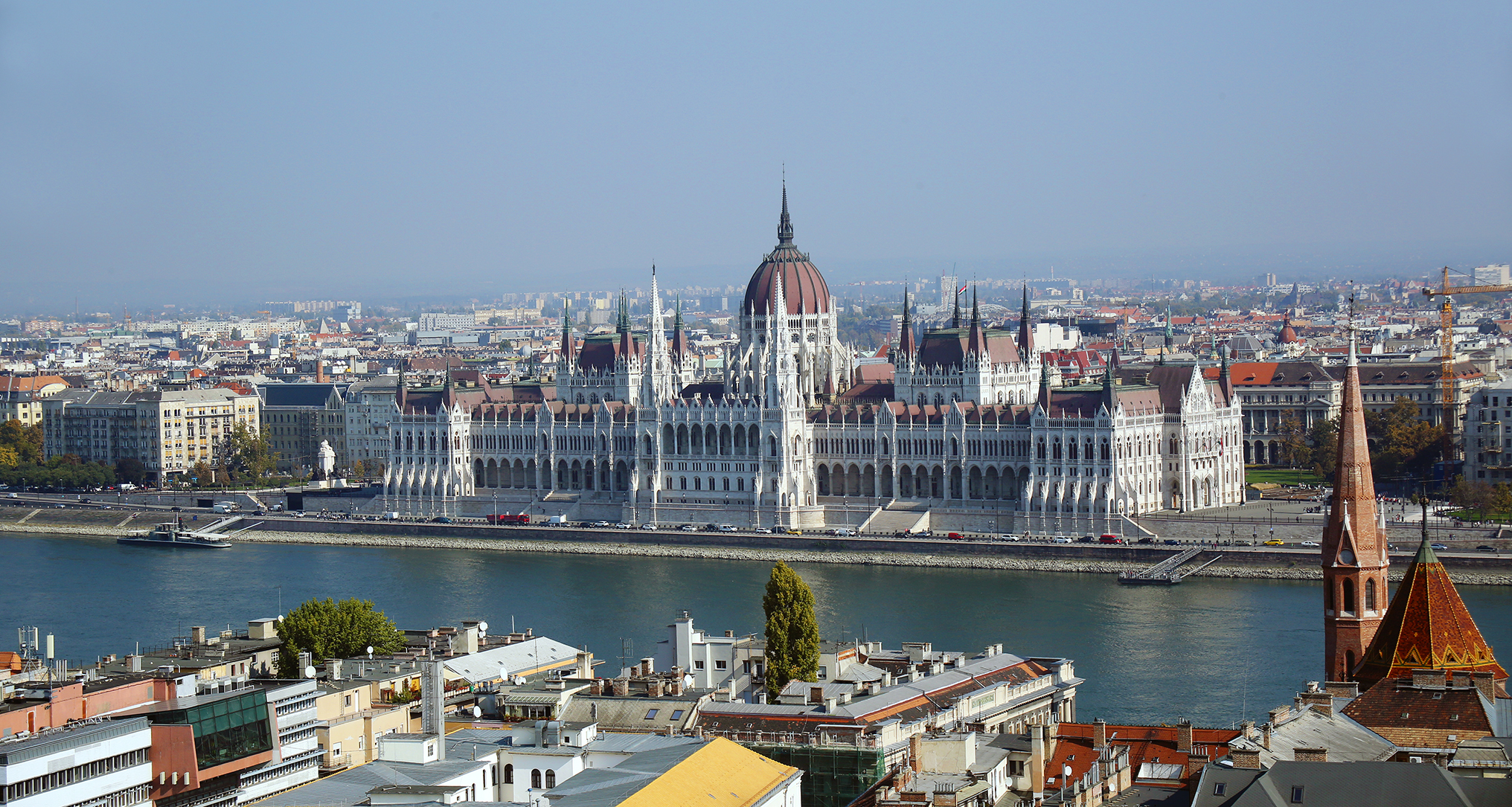
The wonderful view of Budapest and the Hungarian Parliament building from Fishermans's Bastion in perfect mid-October weather will always, for us, be emblematic of this trip.
Astronomical Visit to Eotvos Lorand University and Konkoly Observatory
While Mary absorbed Budapest ambience, John visited the Department of Physics at Eotvos Lorand University and the historic Konkoly Observatory of the Hungaran Academy of Sciences (founded 1871).
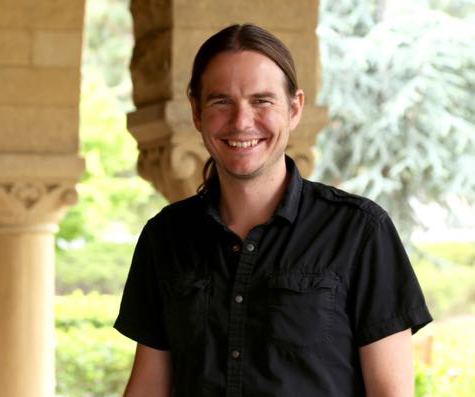
John's host was Norbert Werner, who leads the Hot Universe group at at the University. Enjoyable and in-depth discussions with Norbert and his group of students and postdocs cemented our understanding that we are in very good agreement on the influence of hot (mostly X-ray-emitting) gas on galaxy evolution and vice versa, mediated in part by energy and momentum feedback from central supermassive black holes that are fed cold and cooling gas via a variety of mechanisms. Discussions were intense and very rewarding.
Norbert's web site is here.


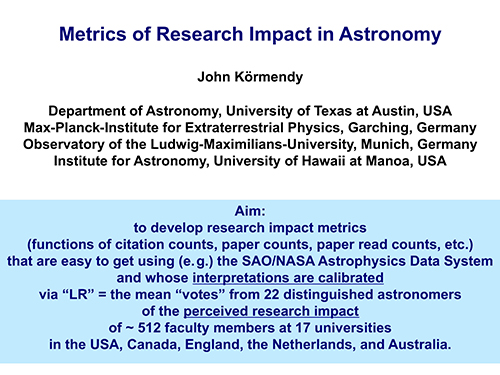

These are the four talks that I gave in Budapest -- the first 3 at the University and the fourth at the Observatory.
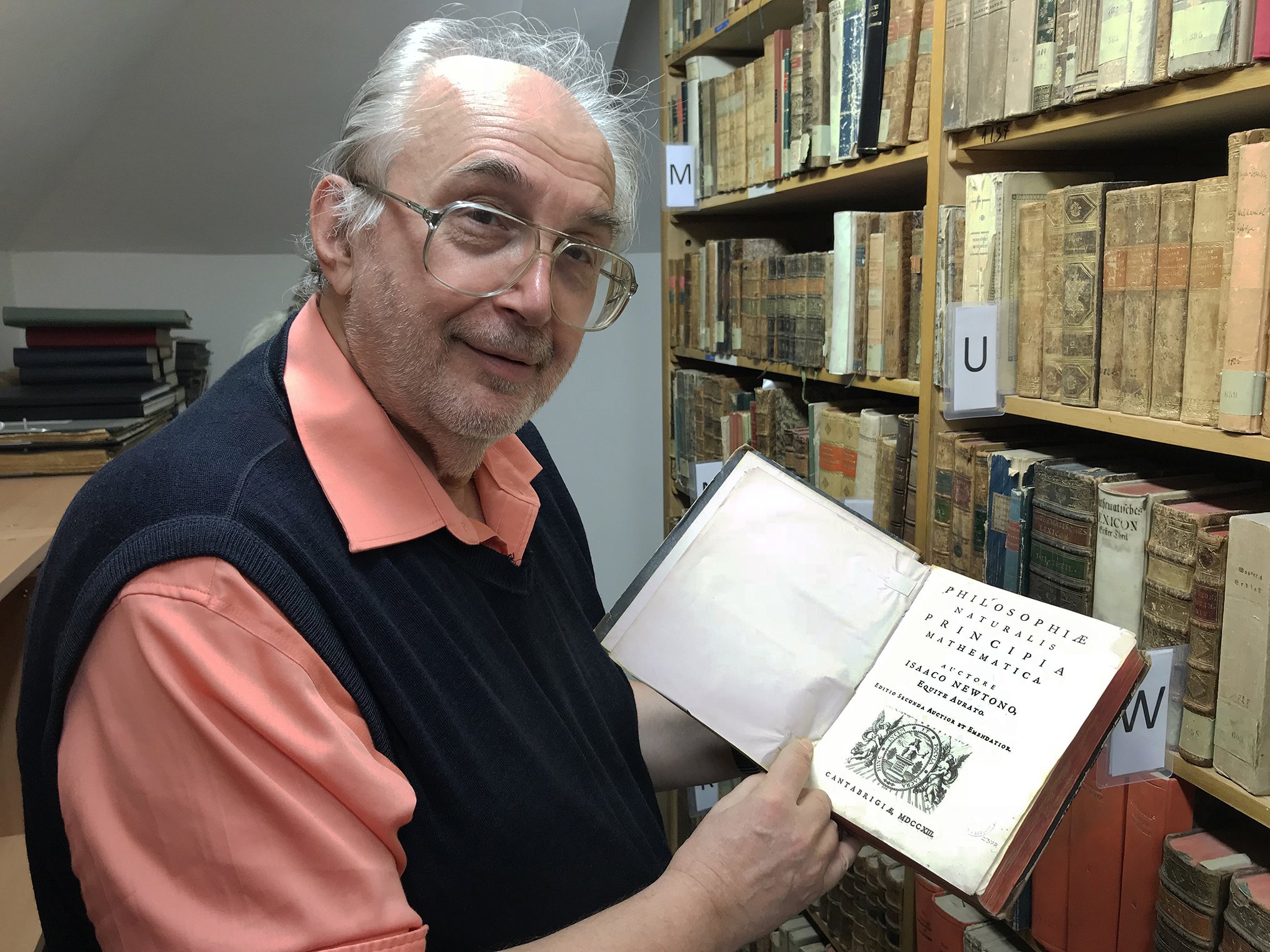
Second Edition of Newton's Principia, dated 1713. This is arguably the most important publication ever in the sciences. Some of the ideas were already "in the air": Newton's First Law of Motion had already been formulated by Galileo. Kepler had already written down his three rules of planetary motion, which were the first understood mathematical laws of Nature. But Newton's Principia, emphasizing in good Latin that it is about mathematical principles, jump-started the modern scientific method of (1) asking Nature and (2) formulating natural laws in mathematical language that can be tested and used with measureable and interpretable accuracy.
This picture and the following ones in the Konkoly library were taken and kindly made available by Norbert Werner.
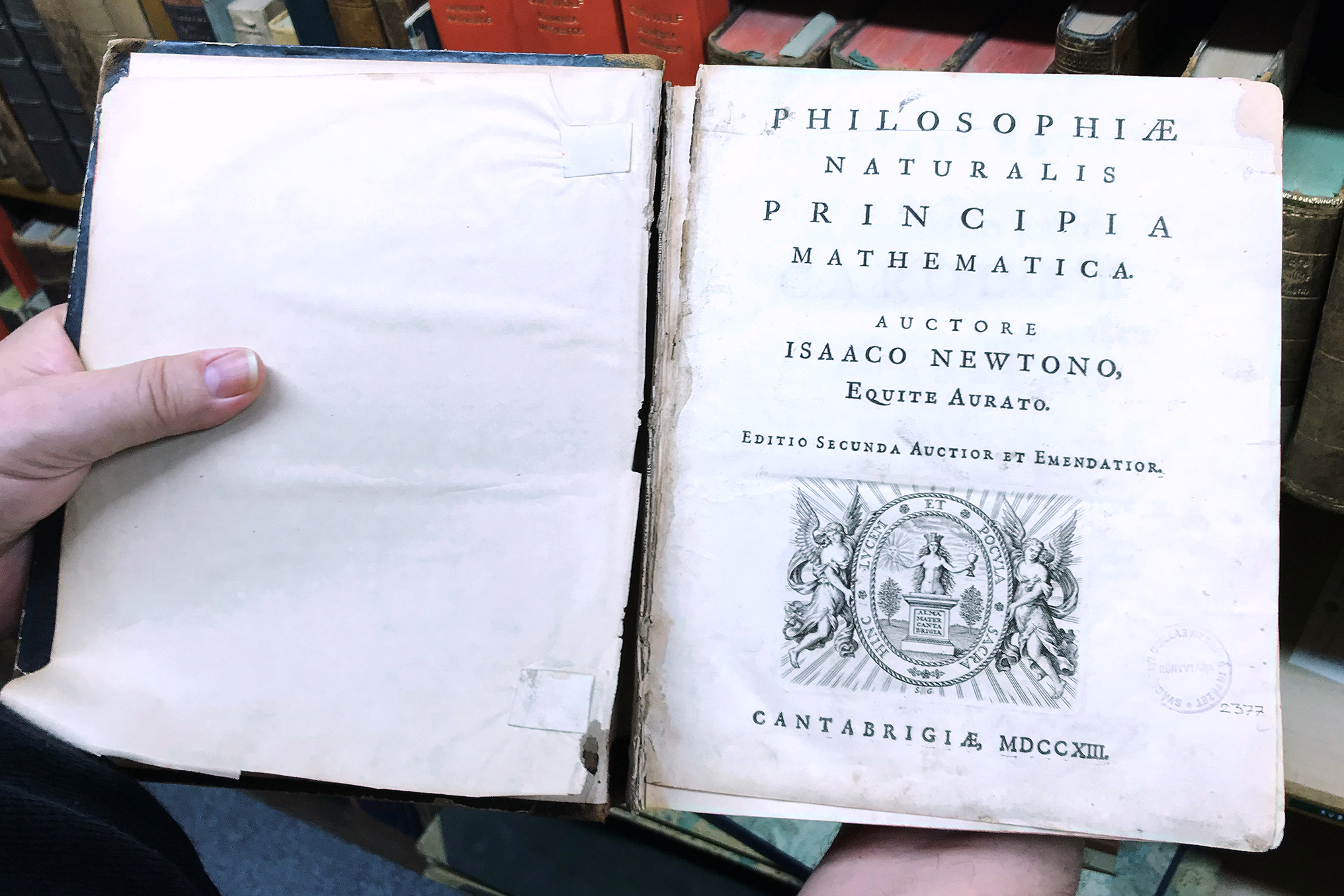
Title page of Newton's Principia.

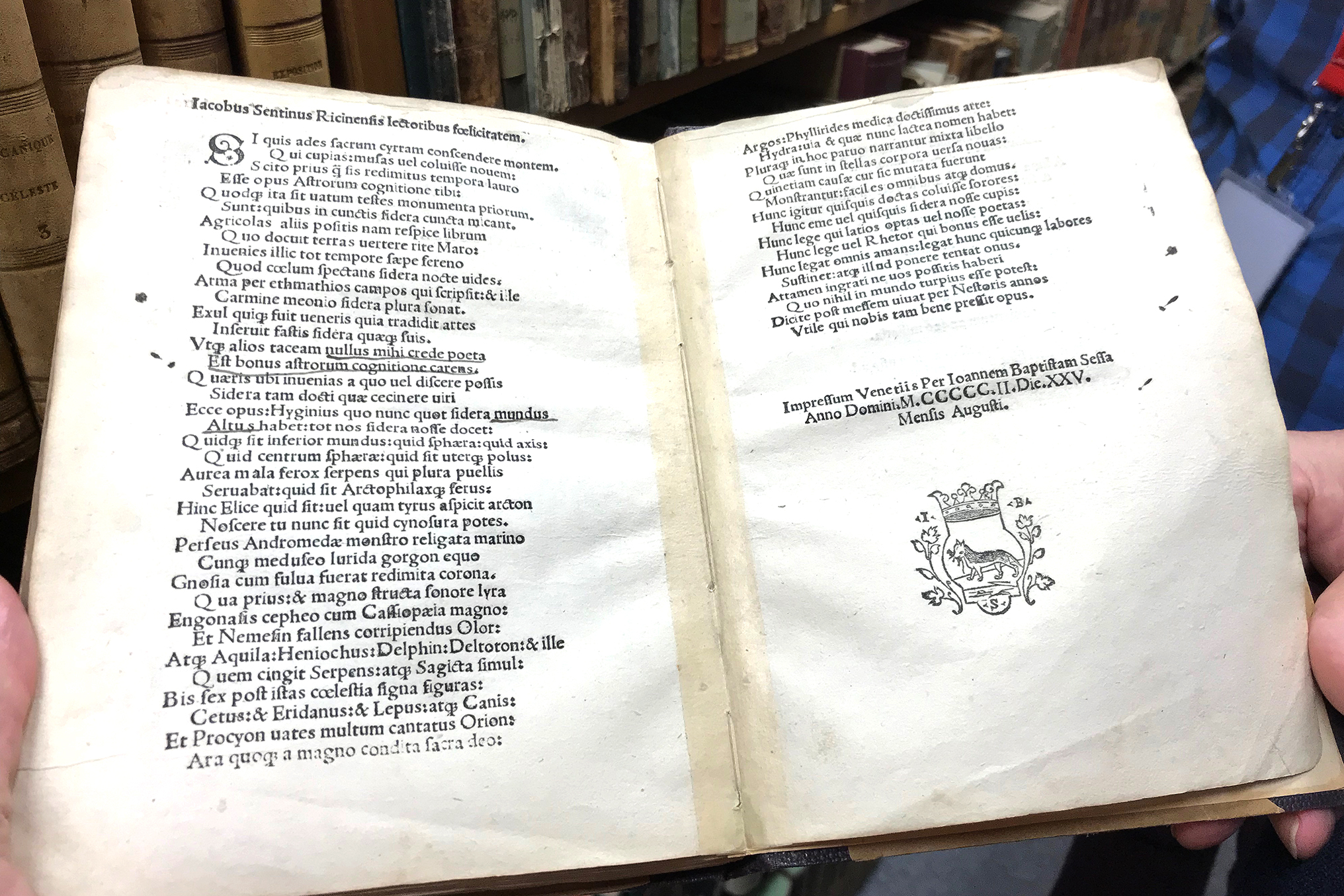
This book of astronomy-related poetry is one of the oldest books in the Konkoly library. Originally by Gaius Julius Hyginus (c. 64 BC to AD 17), this reprint was published in Venice on August 25, 1502. Hyginus was an author and poet with scientific interessts; this work is a summary of astronomy in florid, mythology-oriented poetry. Wikipedia says that Hyginus was elected "superintendant of the Palatine library by Augustus". He was a prolific author; this is one of his few works that is not lost. The first picture above also shows the Konkoyi archivist who kindly showed John a few books in their astonishing collection.
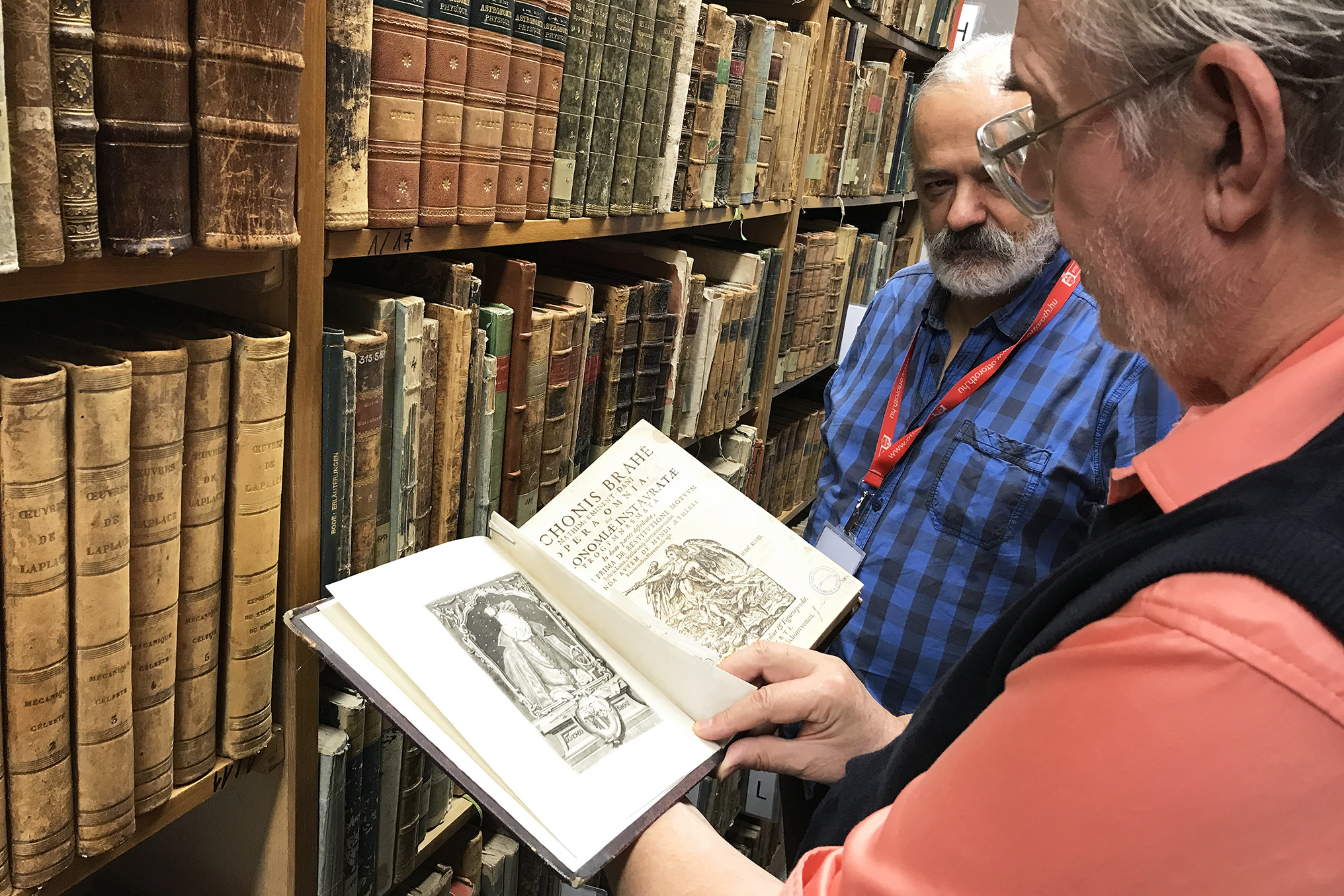
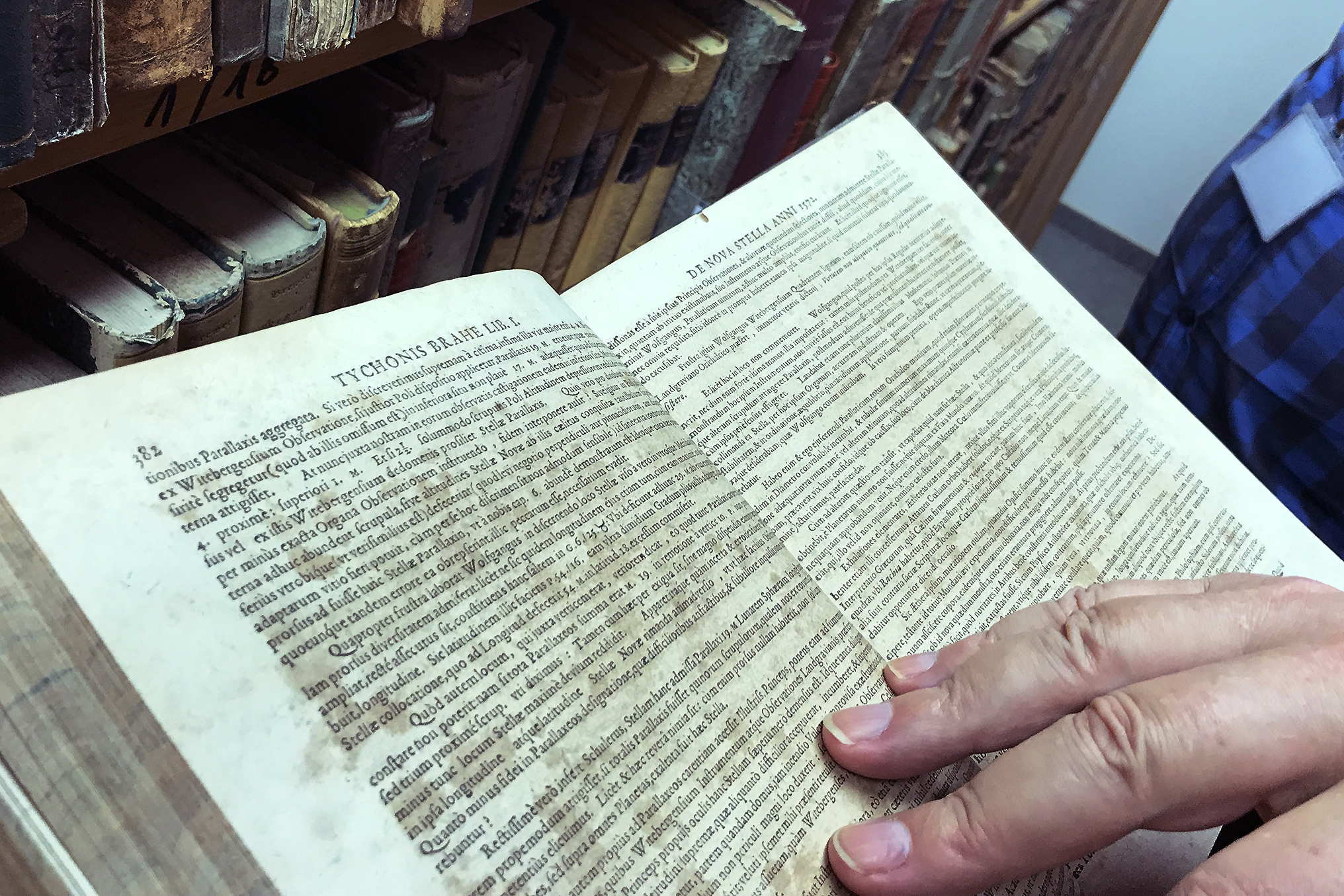
I got to see several publications by Tycho Brahe, including (second picture) one about "Tycho's supernova" of 1572. Note that this book is very thick! So were Tycho's publications of his meticulous observations of planetary positions -- the ones that allowed Johannes Kepler to derive the first mathematical laws of planetary motion.
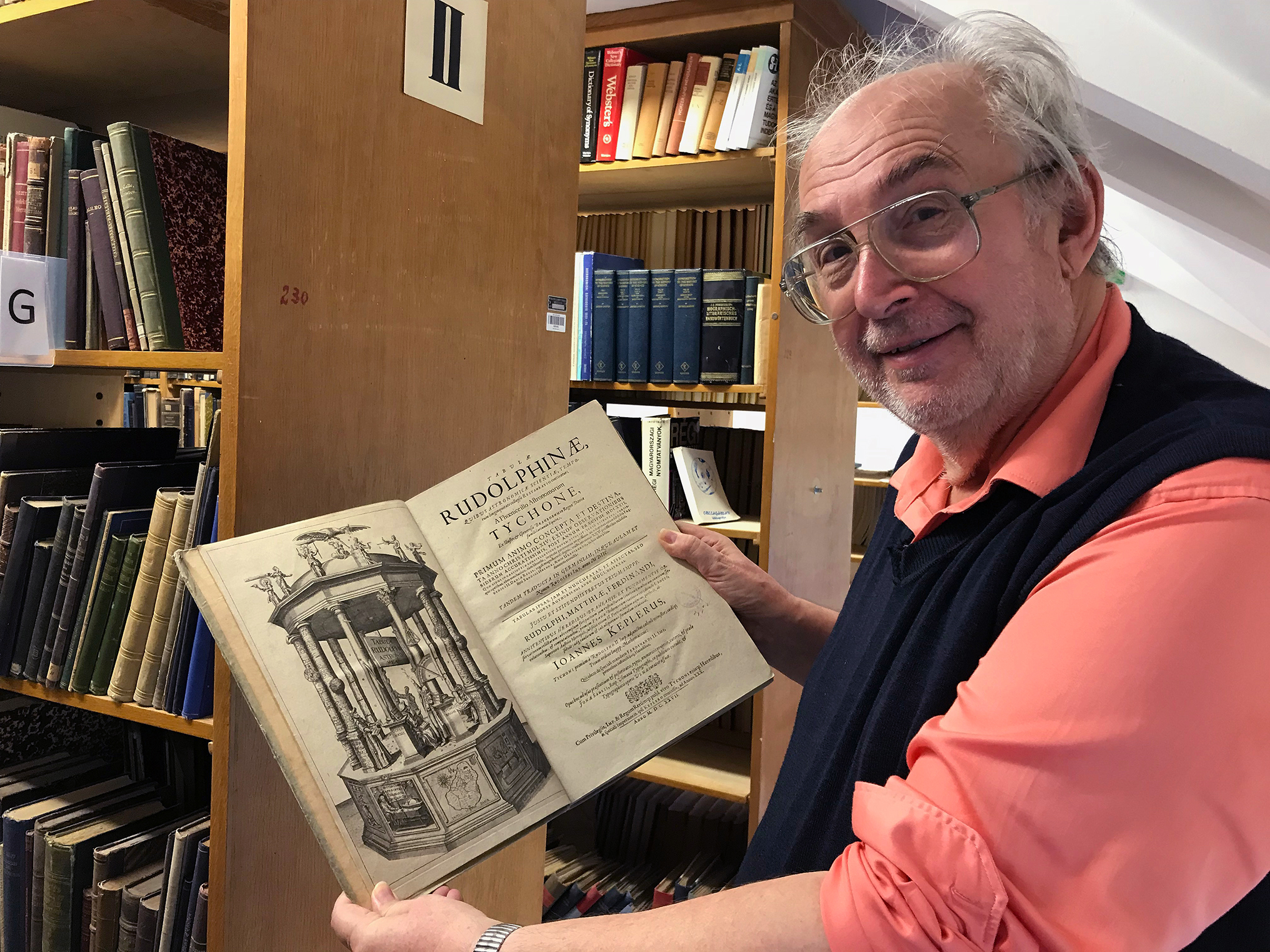
Rudolphine Tables published by Johannes Kepler in 1627. They include measurements of the positions of the 1005 stars used by Tycho Brahe plus other stars and plus the positions of planets with respect to the stars. Most measurements are accurate to about one arc minute -- absolutely astonishing in this pre-telescope era when observations were made visually using giant protractors. The measurements even include correction for the bending of light rays by atmospheric refraction. The calculations were made by Kepler and were exceedingly taxing. During the time leading up to publication, Kepler was also in conflict with the Brahe family, who wanted control of and any profit made from publication. Kepler won that battle, and used the observations to derive his laws of planetary motion. In fact, he had to work hard to collect enough on debts owed to him to buy paper, and he paid for publication himself. The first edition of 1000 copies was published in 1627. The tables were dedicated to Holy Roman Emperor Ferdinand II but named after Rudolph II, who first ordered them. (Source: Wikipedia) I also got to see (very thick!) other volumes of Tycho's published observations.
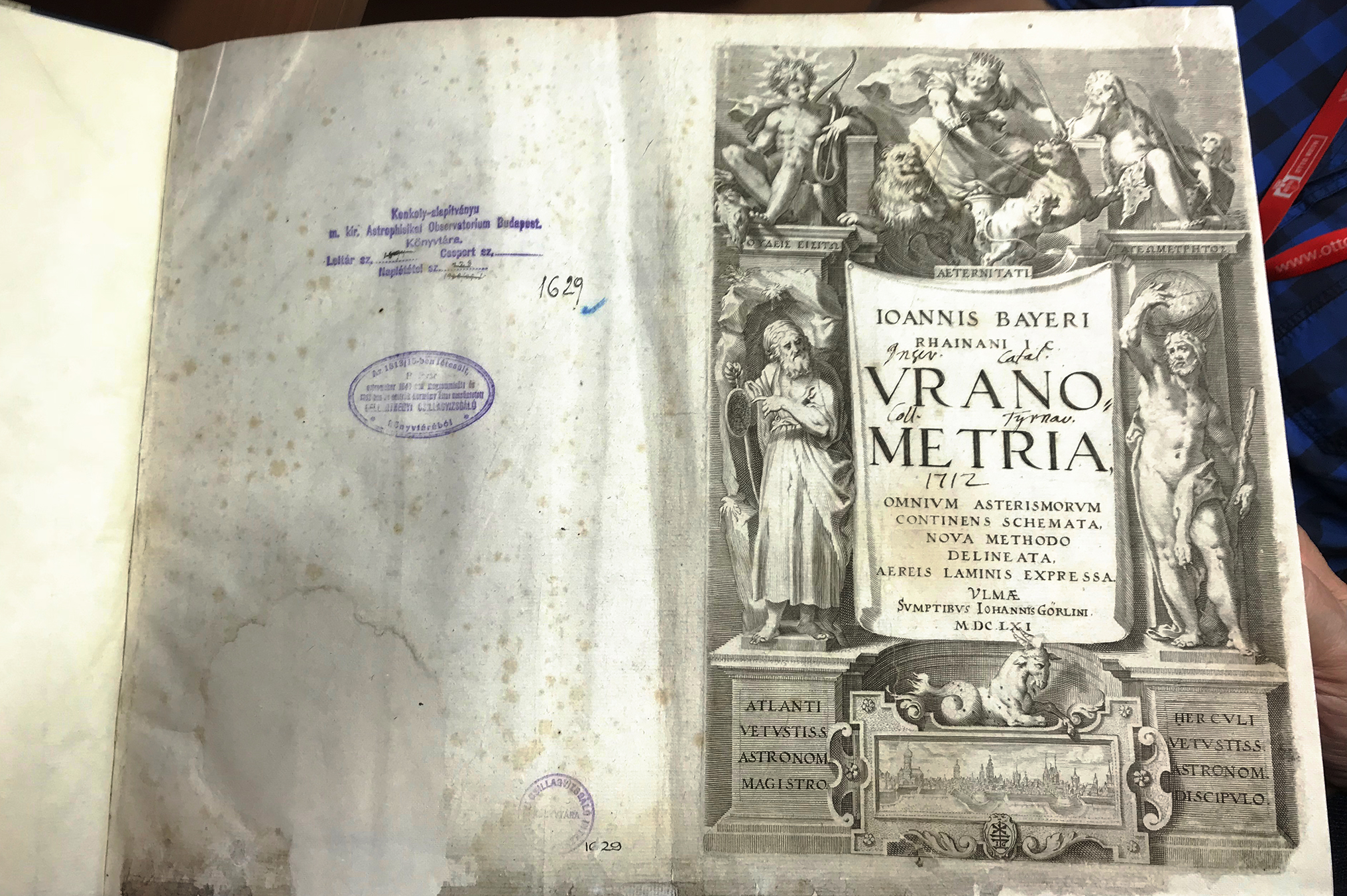
The Uranometria is the star atlas by Johannes Bayer that introduced the Greek letter designations for stars that are still used today. It was first published in 1603; this version is from 1661. The star charts were engraved on copper plates by Alexander Mair (ca 1562-1617). (Source:Wikipedia)
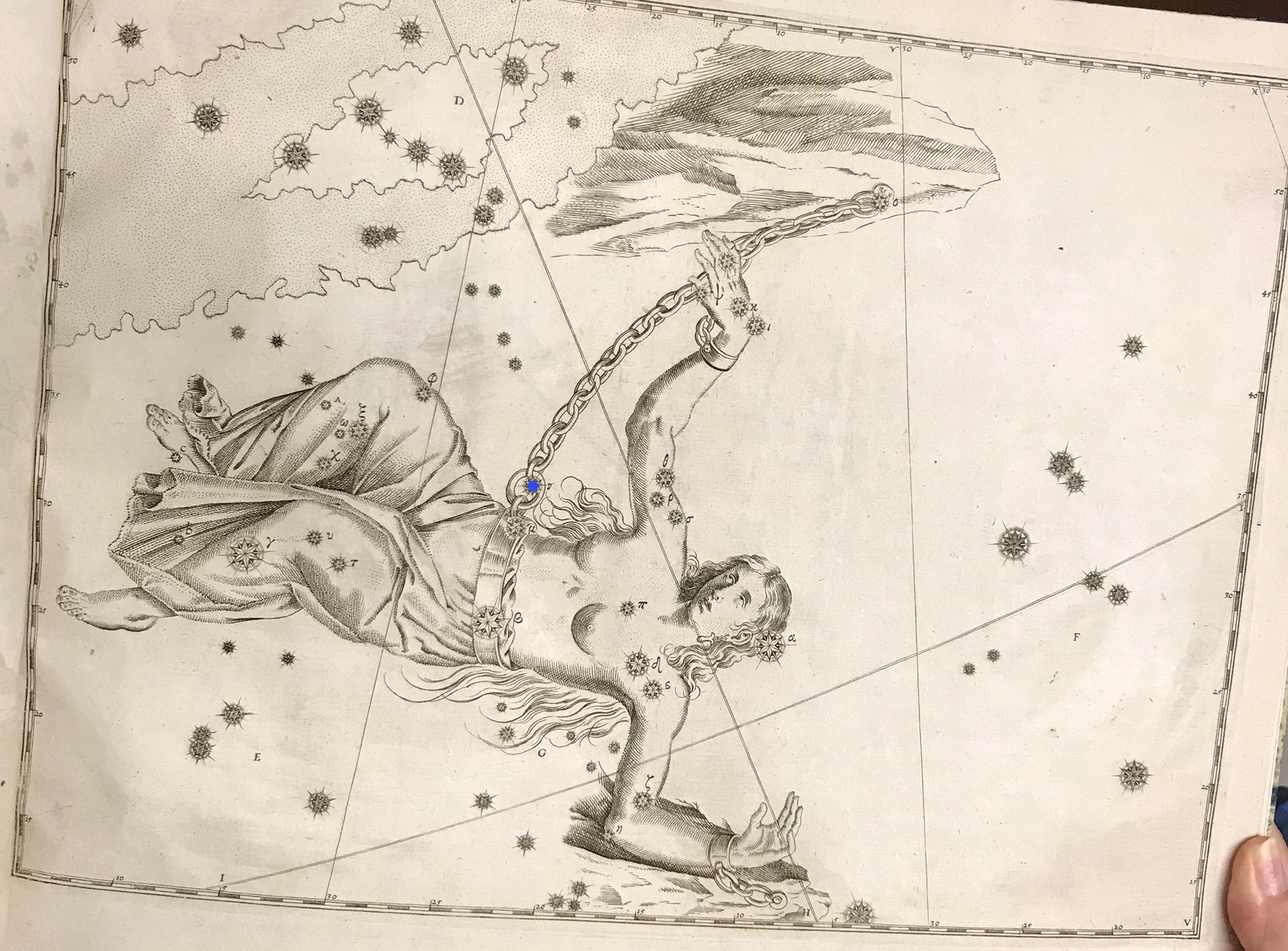
Constellation Andromeda from Bayer's Uranometria. I have marked the star nu And (V magnitude 4.52, spectral type B4/5 + F8, both main sequence stars) in blue. The Andromeda Galaxy in which I discovered my first supermassive black hole is not illustrated but is slightly to the right of nu And. The three brightest stars that define Andromeda, (left to right) gamma, beta, and alpha And, can be identified along her left shin, back, and head, respectively. The constellation Cassiopeia is the obvious W at the top-left of the map.
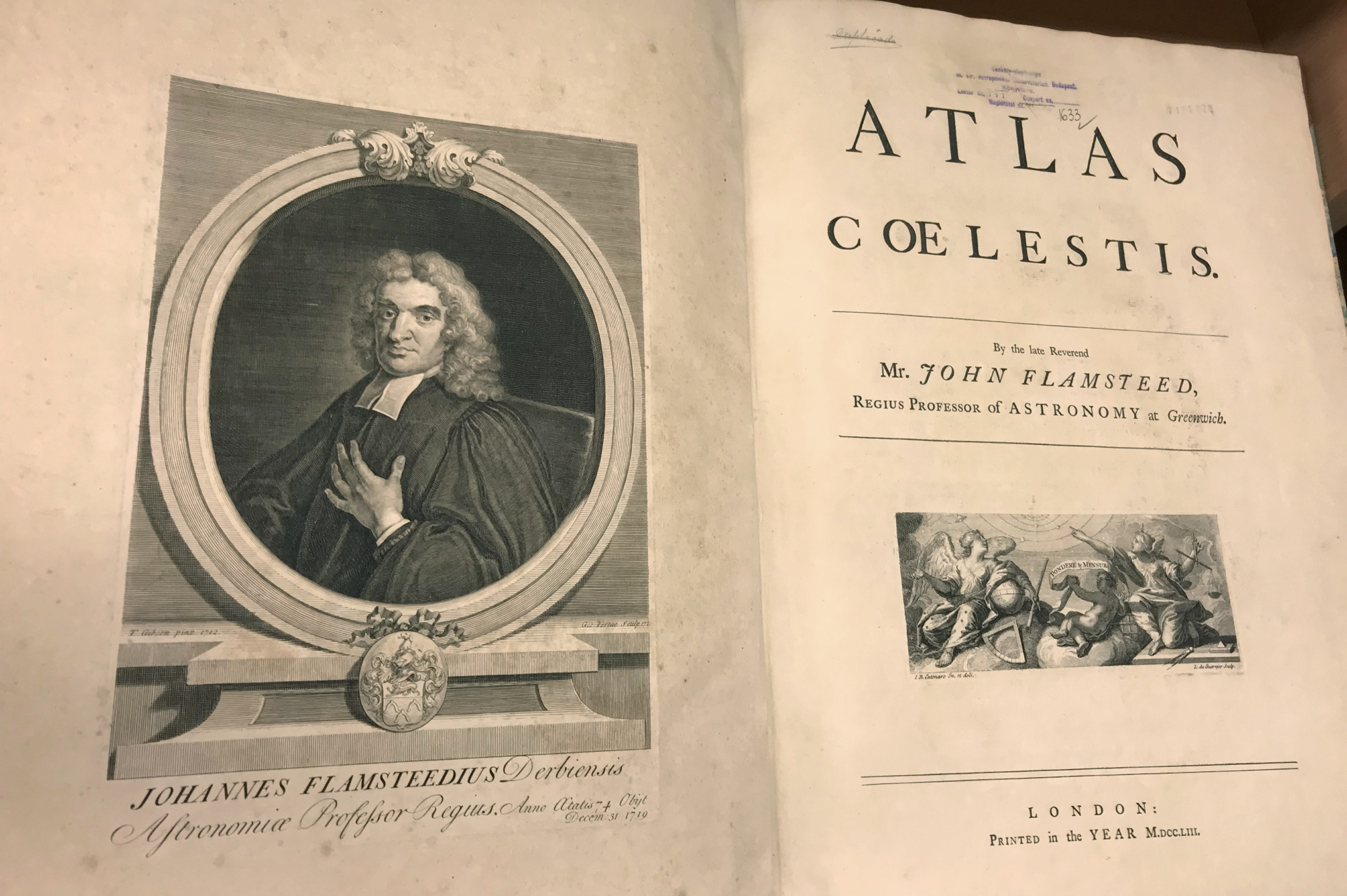
The last book that I got to see was Flamsteed's Celestial Atlas, published in 1729 based on his observations. This version is from 1753. Quoting Wikipedia: "The Atlas -- the largest that ever had been published and the first comprehensive telescopic star catalog and companion celestial atlas -- contains 26 maps of the major constellations visible from Greenwich, with drawings made in the Rococo style by James Thornhill. ... The publication enjoyed immediate success, becoming the standard reference for professional astronomers for nearly a century."
It was a priviledge to see and to personally hold these historic volumes. Many thanks to Norbert Werner for arranging this and for taking the pictures, to Konkoly Observatory for allowing it, and to the archivist for his knowledgeable and enthusiastic showing of the Observatory's treasures.
Budapest Sights

We spent Sunday, October 7, 2018 sightseeing, beginning with a taxi ride up to the Citadel on the Buda side of the Danube. This is a city panorama showing, in the middle distance at left, the Szechenyi Chain Bridge, the first permanent bridge from the (left) Buda side of the city to (right) the Pest side; it was opened in 1849. Finally uniting Budapest into one city, it has great cultural significance in Hungary as well as being regarded, for the time, as an engineering wonder. Wikipedia says that "It became a symbol of advancement, national awakening, and the linkage between East and West." Behind the right-hand end of the bridge is the Hungarian parliament building, here seen end-on. The tall dome at the center of the picture belong to the St. Stephen's Basilica. We walked by the ferris wheel on the way beck from the Basilica to our hotel, out of sight behind the greenery at right.
Scroll right to see the complete panorama.
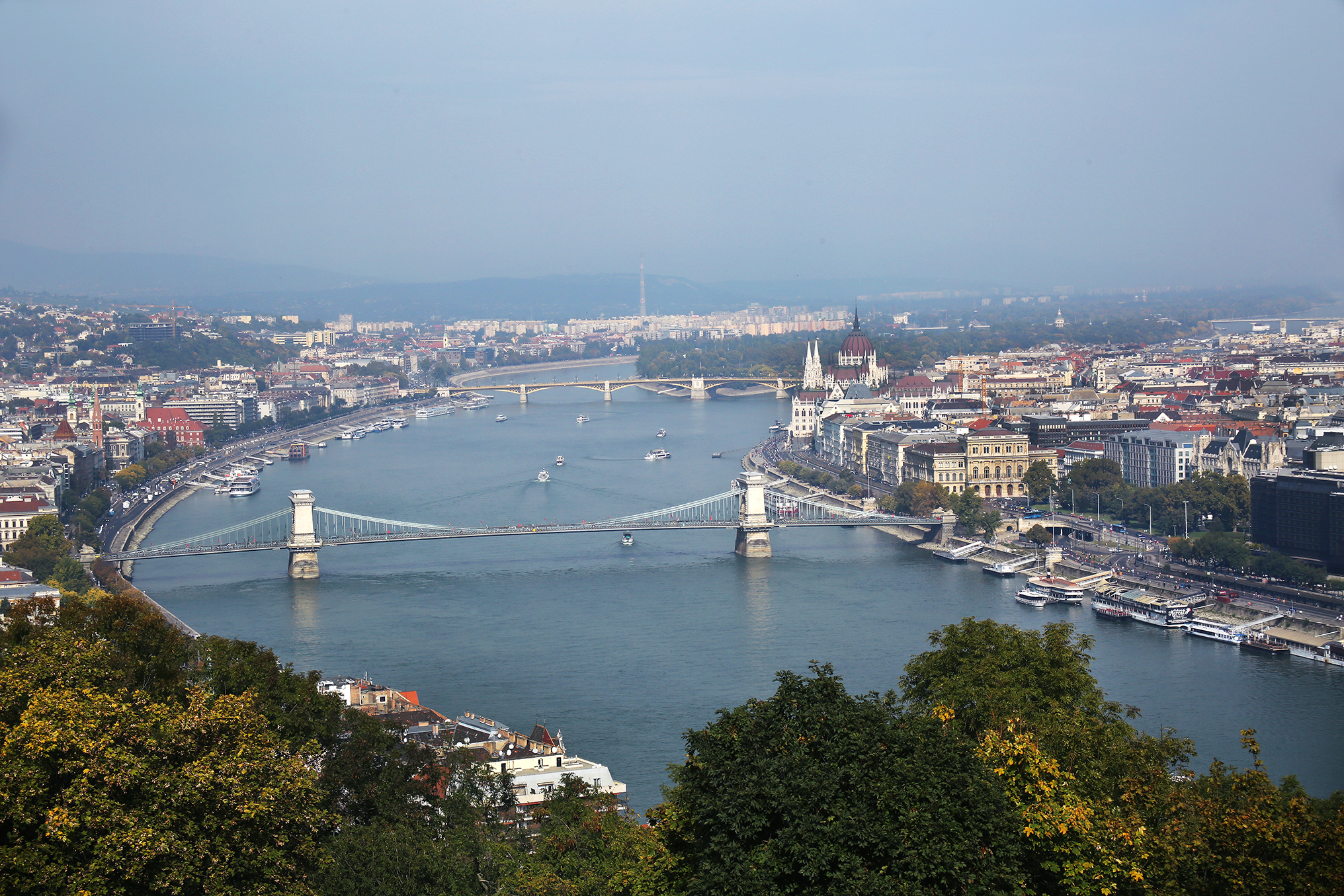
Telephoto view of the Chain Bridge and parlimanet building beyond. Just above the left end of the bridge, the tall brown and triangular brown towers belong to a Calvinist church that is visible in the right foreground of the parliament building view that introduces this web site. So the Fisherman's Bastion and Matthias Church are on a hill further to the left of this view. Our hotel was on Kalvin Ter (Calvin Square): see below.
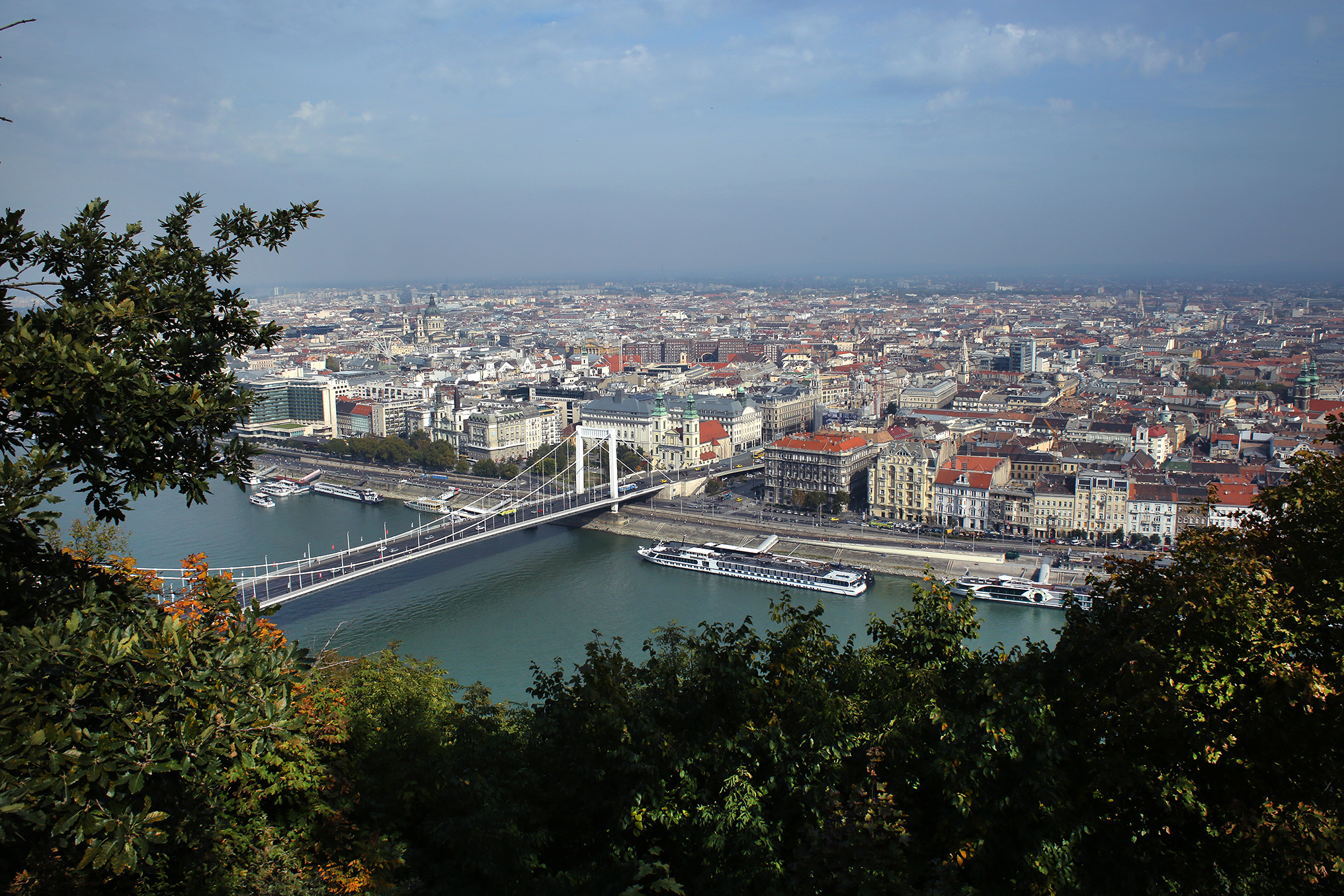
Elizabeth Bridge and the center of Pest from the Citadel on the Buda side of the Danube. We walked back to our hotel, across the bridge and to the right along the pedestrican Vaci Utca, which is behind the first few buildings along the river at right. St. Stephen's Basilica is visible above the bridge.
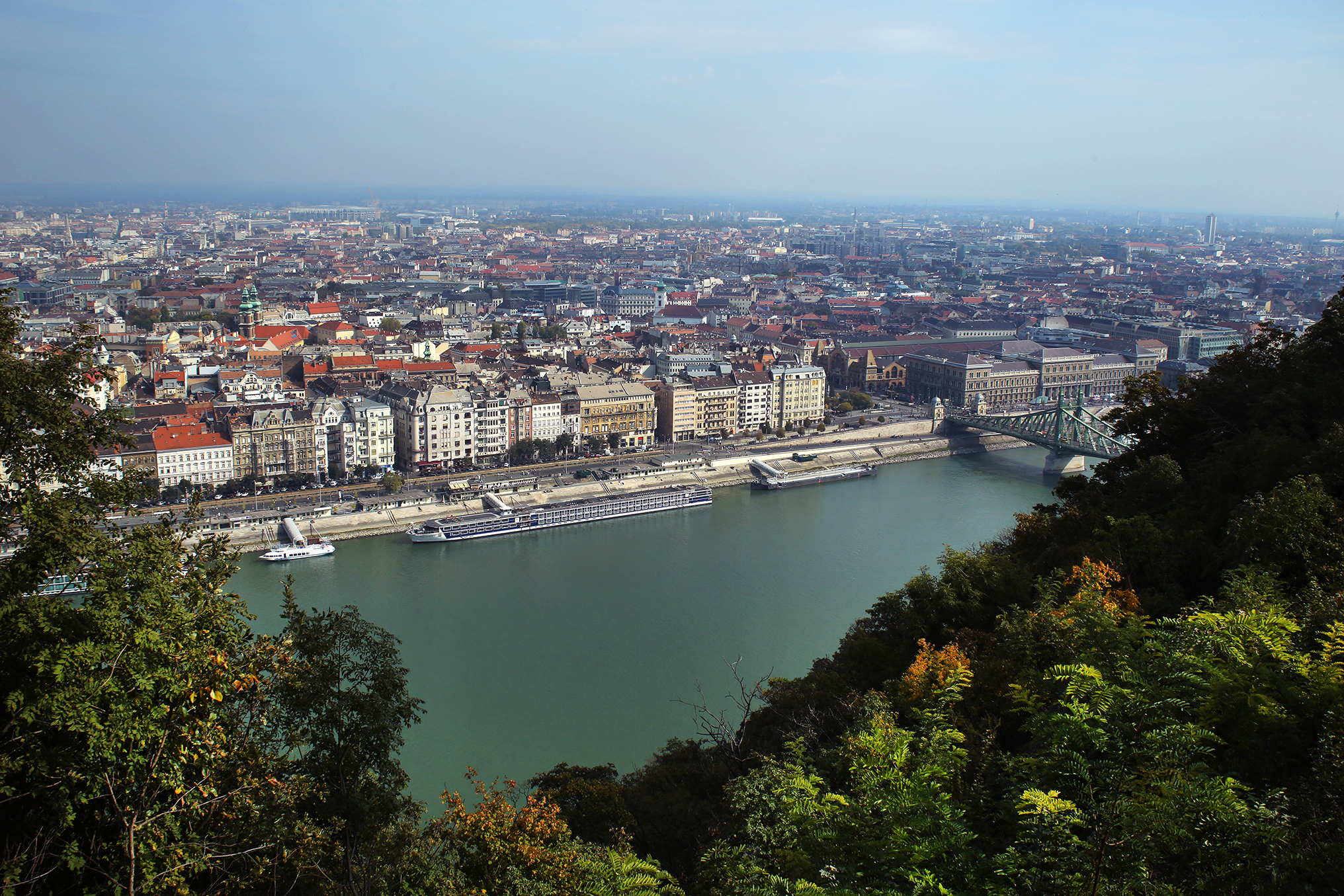
This view is farther to the right of the previous picture and looks down in the direction of our hotel. The Liberty Bridge (Szabadsag hid in Hungarian) is at lower-right; it was originally built in 1894-1896 and opened by Austro-Hungarian Emperoro Franz Josef, who inserted the last silver rivet; the bridge was then was called the Ferenc Jozsef hid. Like all bridges in Budapest, it was rebuilt after World War II. On the far (Pest) side of the river, the road that runs left is Vamhaz korut. The second building on the south (right) side of the road -- the very long building with brown, pointed towers at each side, along the road -- is the Great Market Hall: see picture below). The pedestrian street Vaci Utca ends across Vamhaz korut to the left of the Market Hall. The Anna Cafe picture near the end of these web pages were taken at the Market Hall end of Vaci Utca. Follow Vamhaz korut toward the upper-left to a prominent large building with 4 floors of windows visible below a gray roof (to the left of this are two more buildings that are all modernistic dark gray); this building is on Kalvin Ter, and our hotel is on the left side of the square. I can't distinguish exactly which building is our hotel.
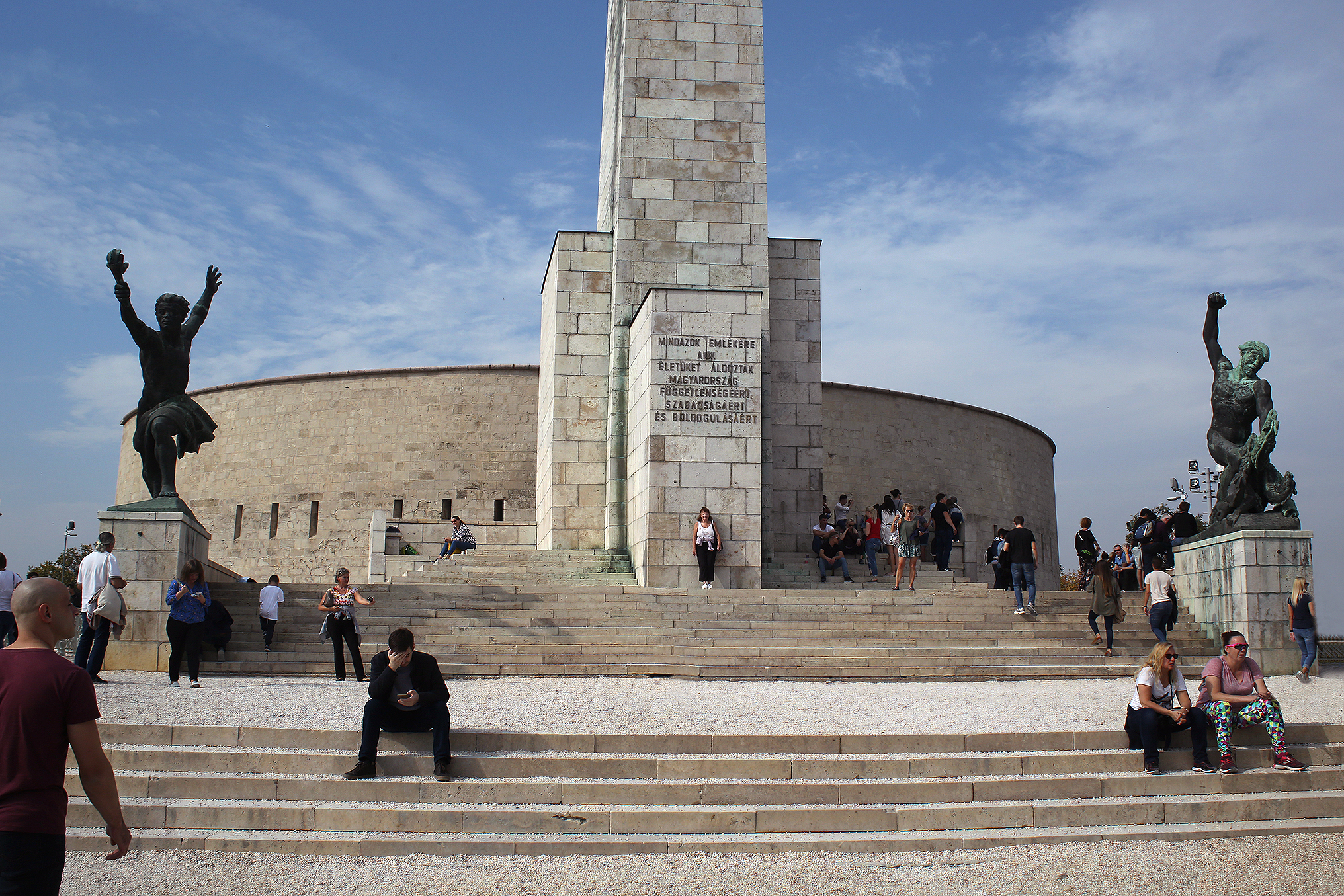
Liberty Monument below the Citadel on Gellert Hill. It was first erected in 1947 in remembrence of what was then called the Soviet liberation of Hungary at the end of World War II. After the 1989 transition of democracy, the inscription was modified to read (in English translation) "To the memory of those all who sacrificed their lives for the independence, freedom, and prosperity of Hungary" (source = Wikipedia).

The 14 m tall Liberty statue holds a palm leaf -- a Soviet addition.
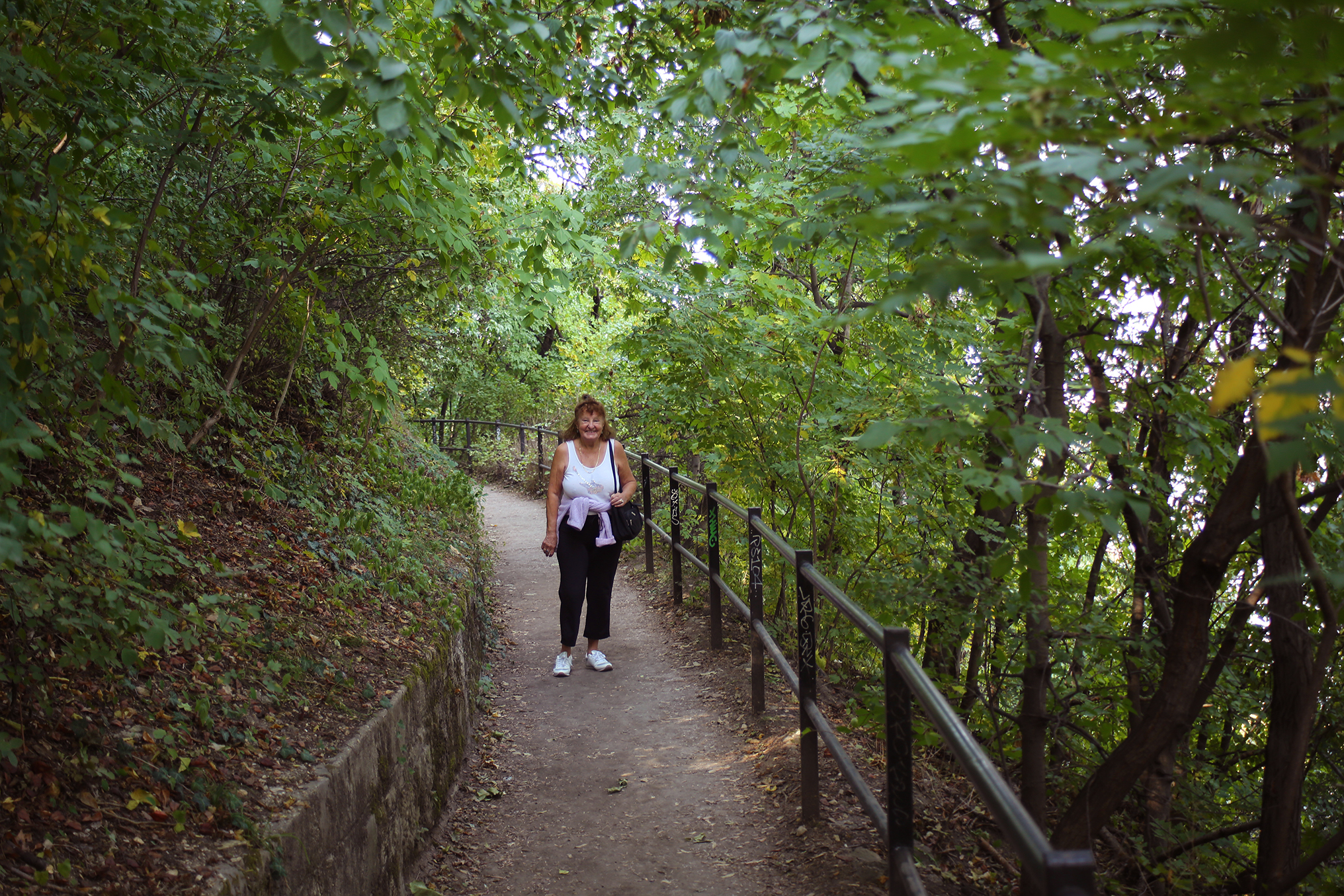
During the walk down Gellert Hill to the Elizabeth Bridge and, eventually, our hotel.
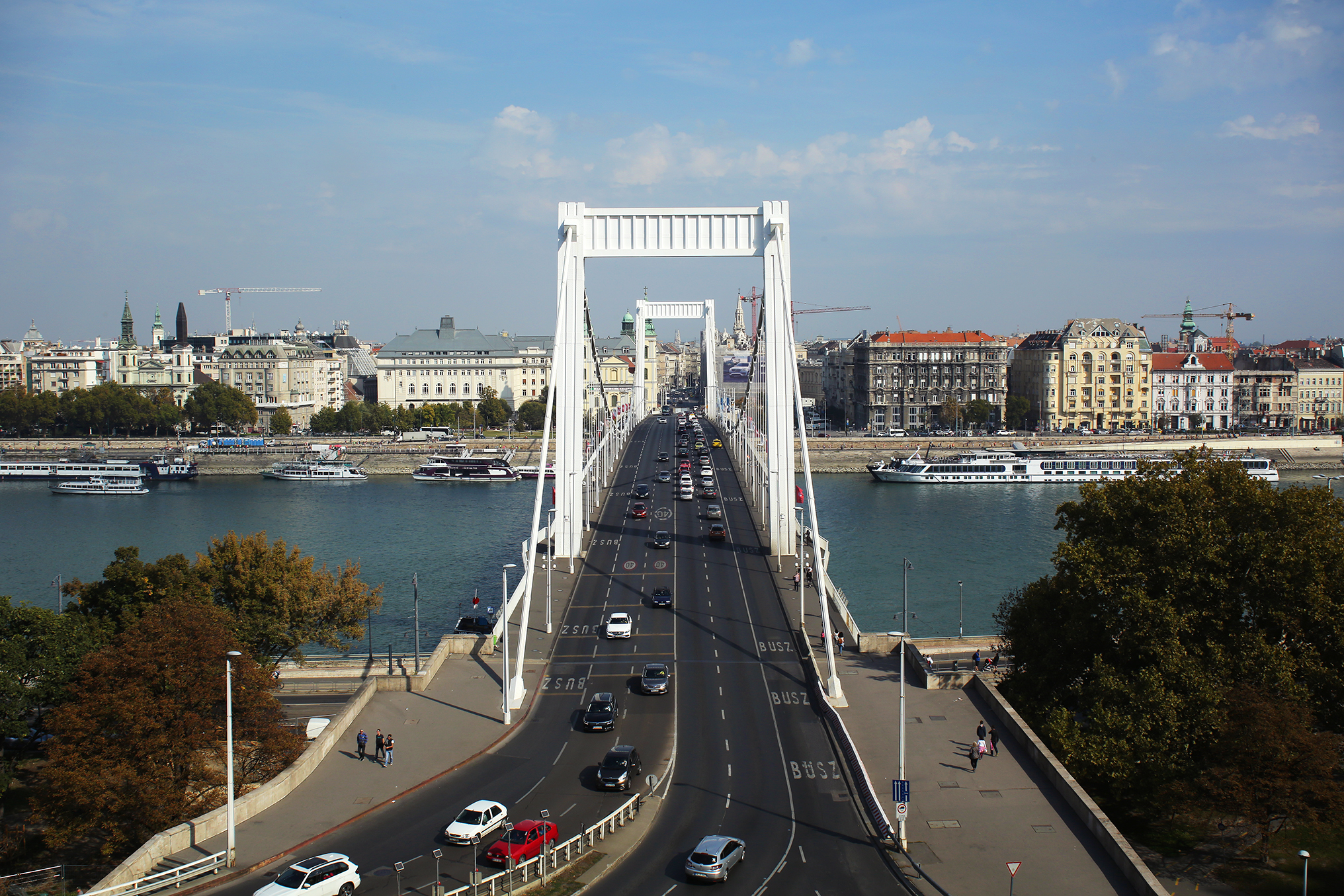
Elizabeth Bridge from near the bottom of the walk down Gellert Hill. We walked across the bridge on our way back to the hotel.
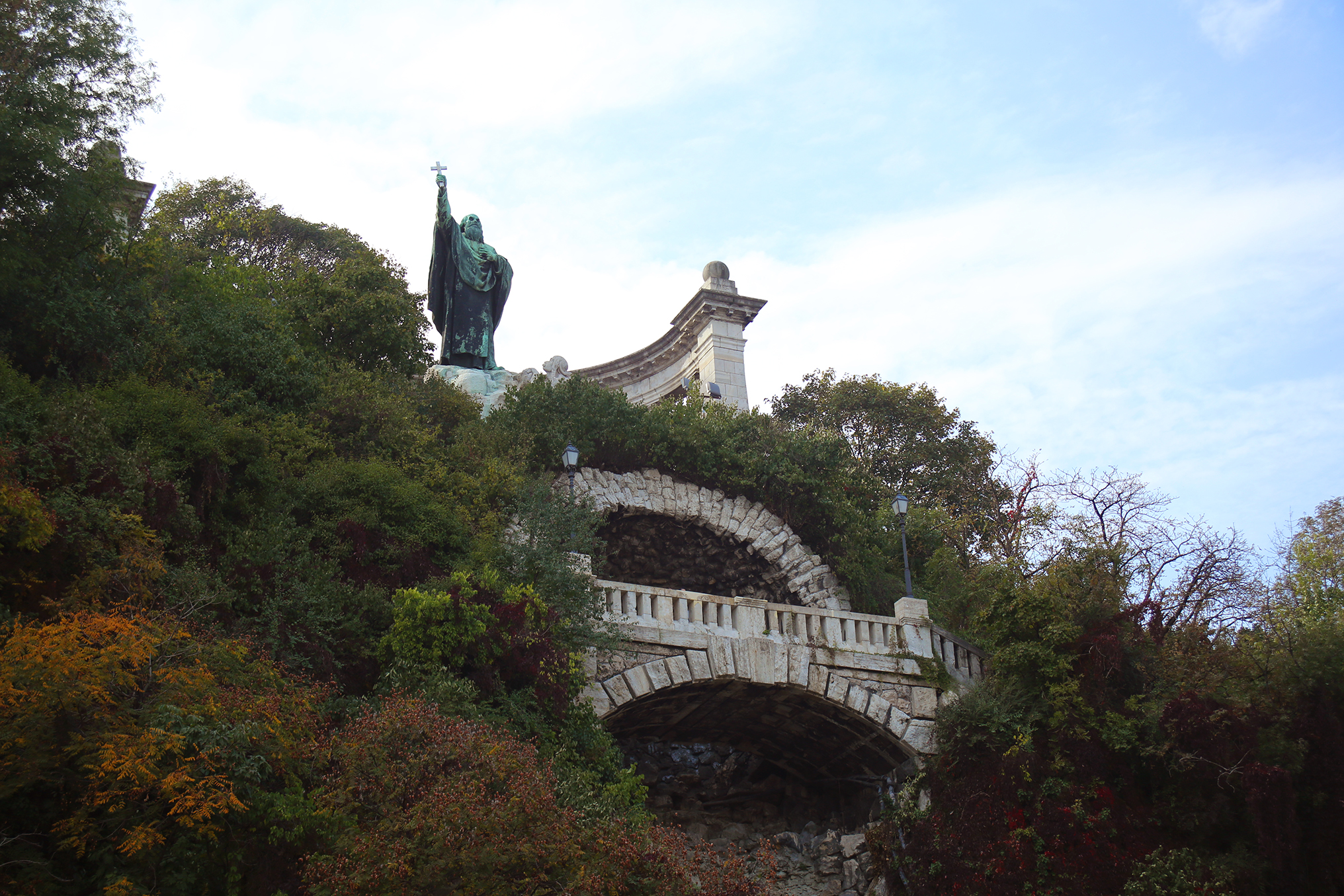
Monument to St. Gellert from near the bottom of the walk down Gellert Hill. He was the first Bishop of Csanad in the Kingdom of Hungary from around 1030 until his death. He was born in a Venetian noble family, educated as a Benedictine monk, and visited Hungary in about 1020 during a pilgrimage to the Holy Land. King Stephen I persuaded him to stay in Hungary, to preach among the locals, and to tutor the king's son and heir, Emeric. Wikipedia says that St. Gellert was killed by pagans during the great pagan rebellion in 1046 -- he was put in a barrel and rolled down into the deep from the top of the hill. He was canonized in 1083 by Pope Gregory VII.
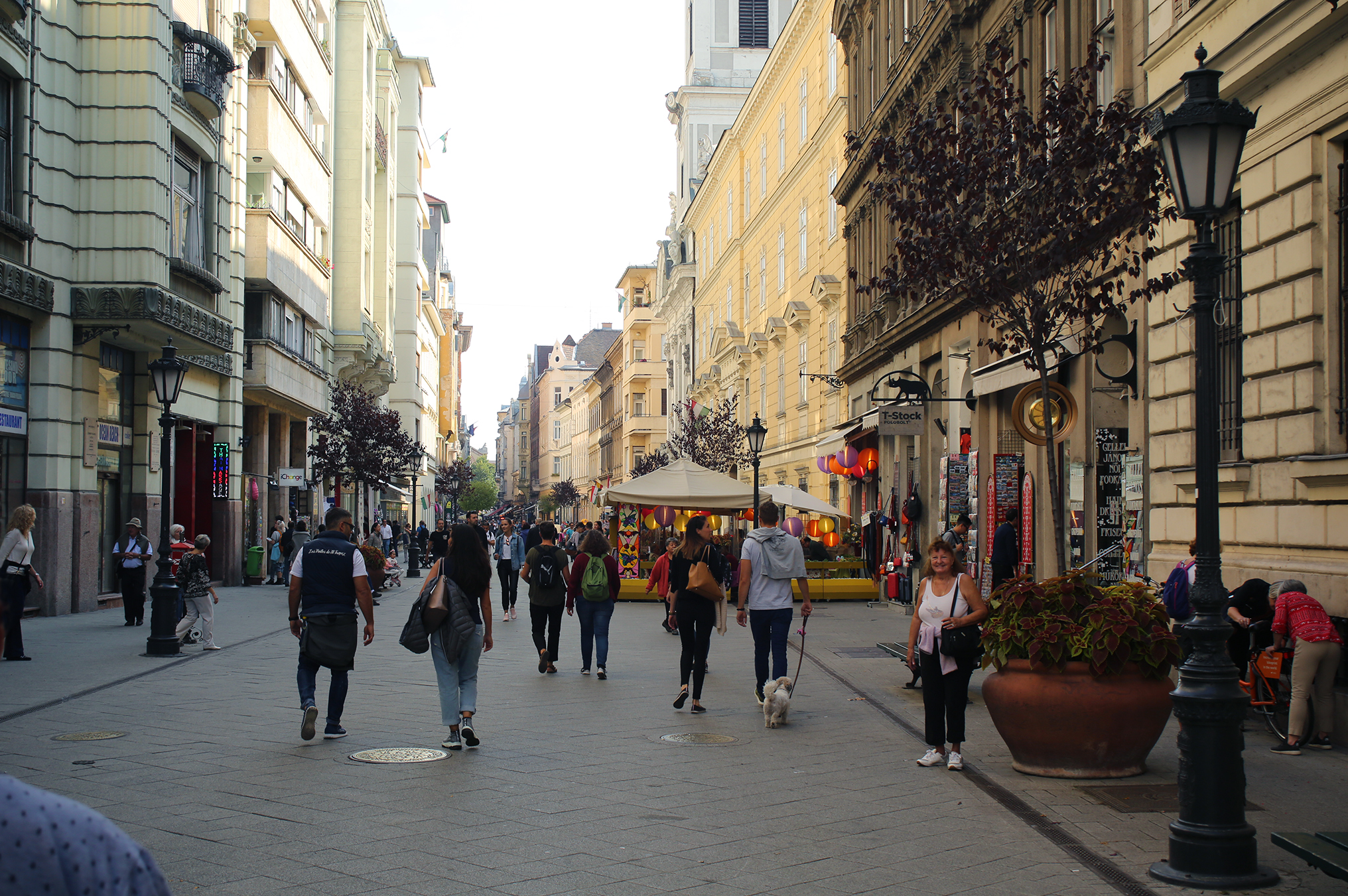
Pedestrian street Vaci Utca on the way from the Citadel back to our hotel.

St. Stephen's Basilica
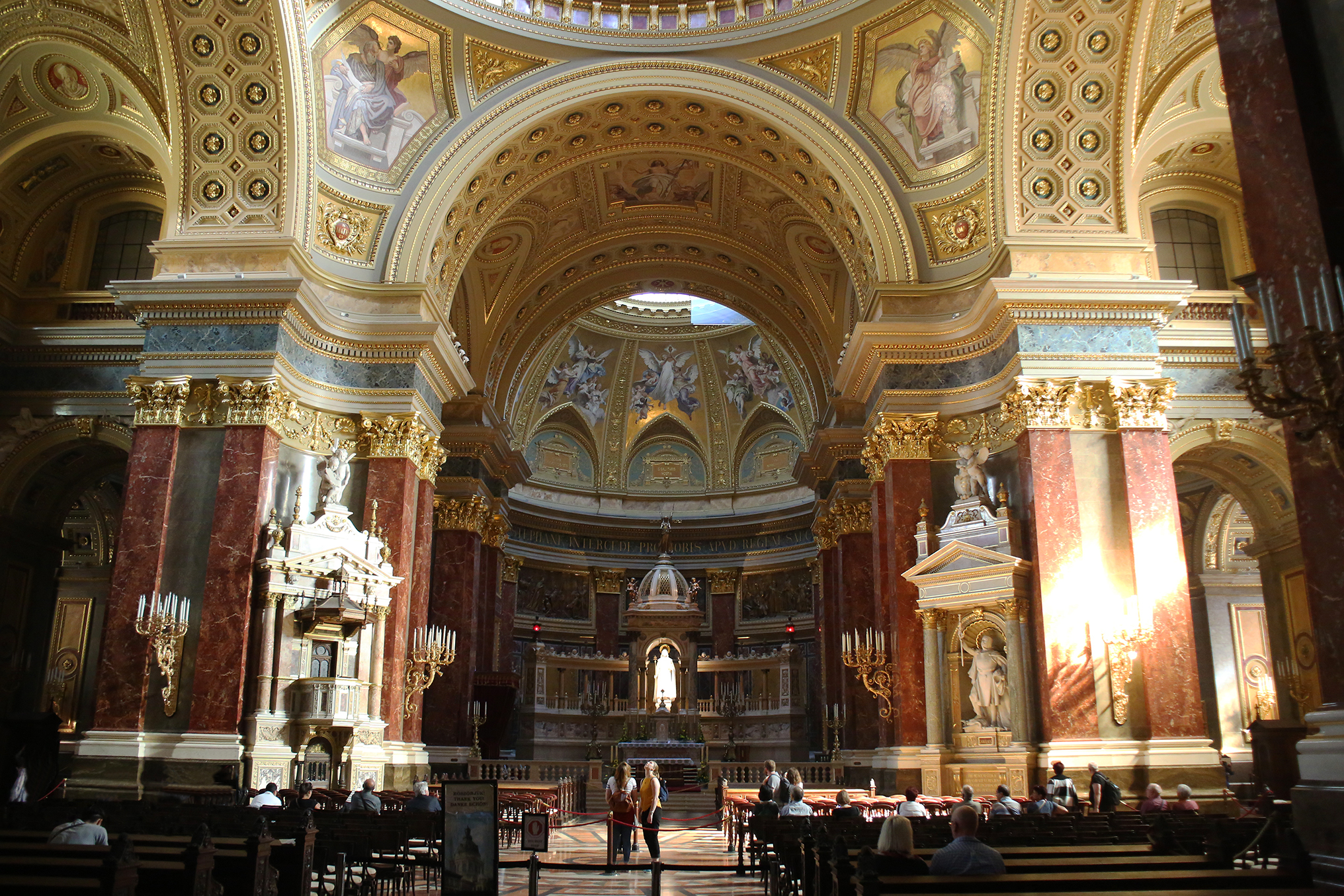
St. Stephen's Basilica : Nave and altar with statue of St. Stephen, the first King of Hungary.
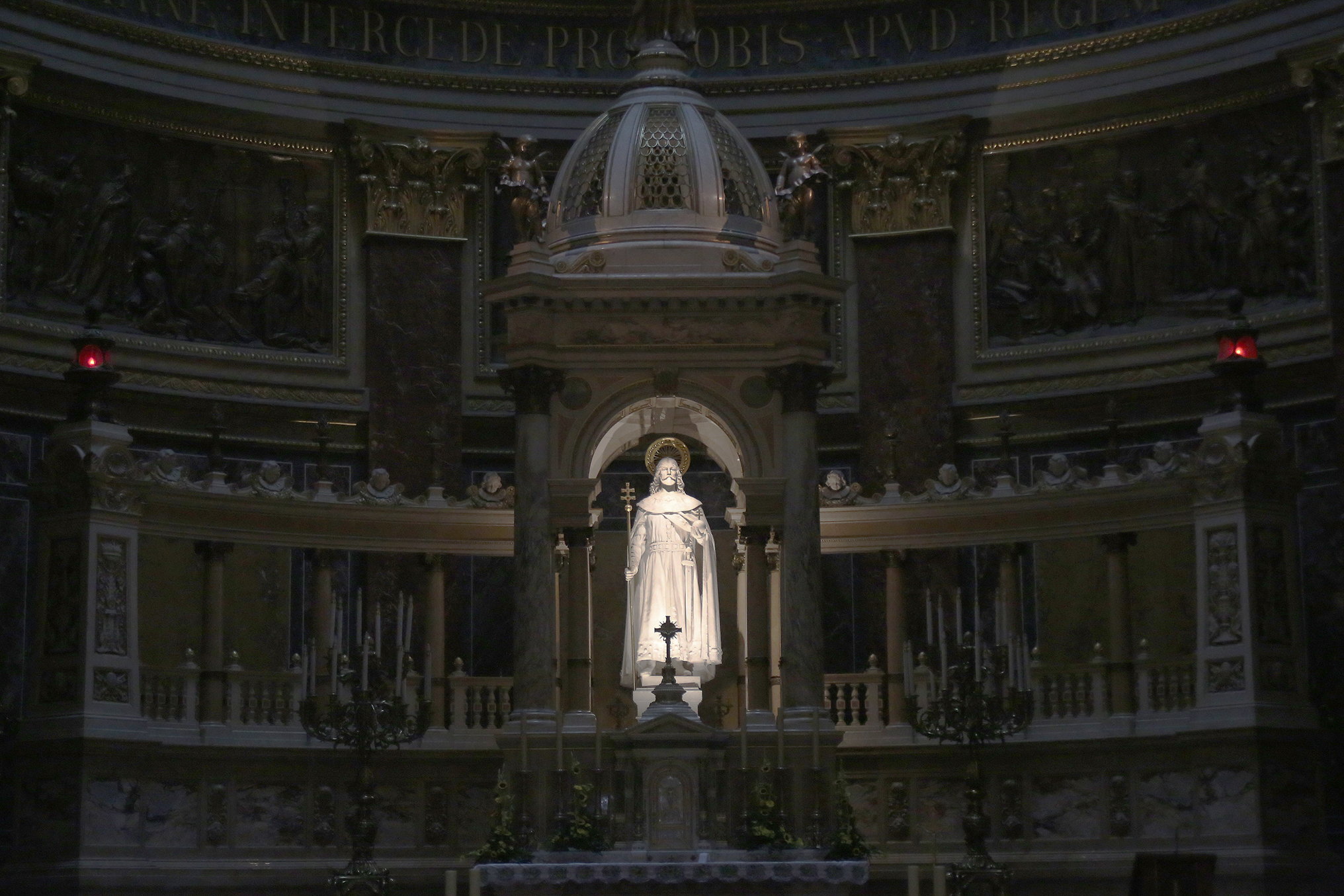
Statue of St. Stephen behind the altar of St. Stephen's Basilica. He reigned from about 975 to 1038 AD and is widely revered in Hungary. There are many statues of him; e. g., at the Fisherman's Bastion.
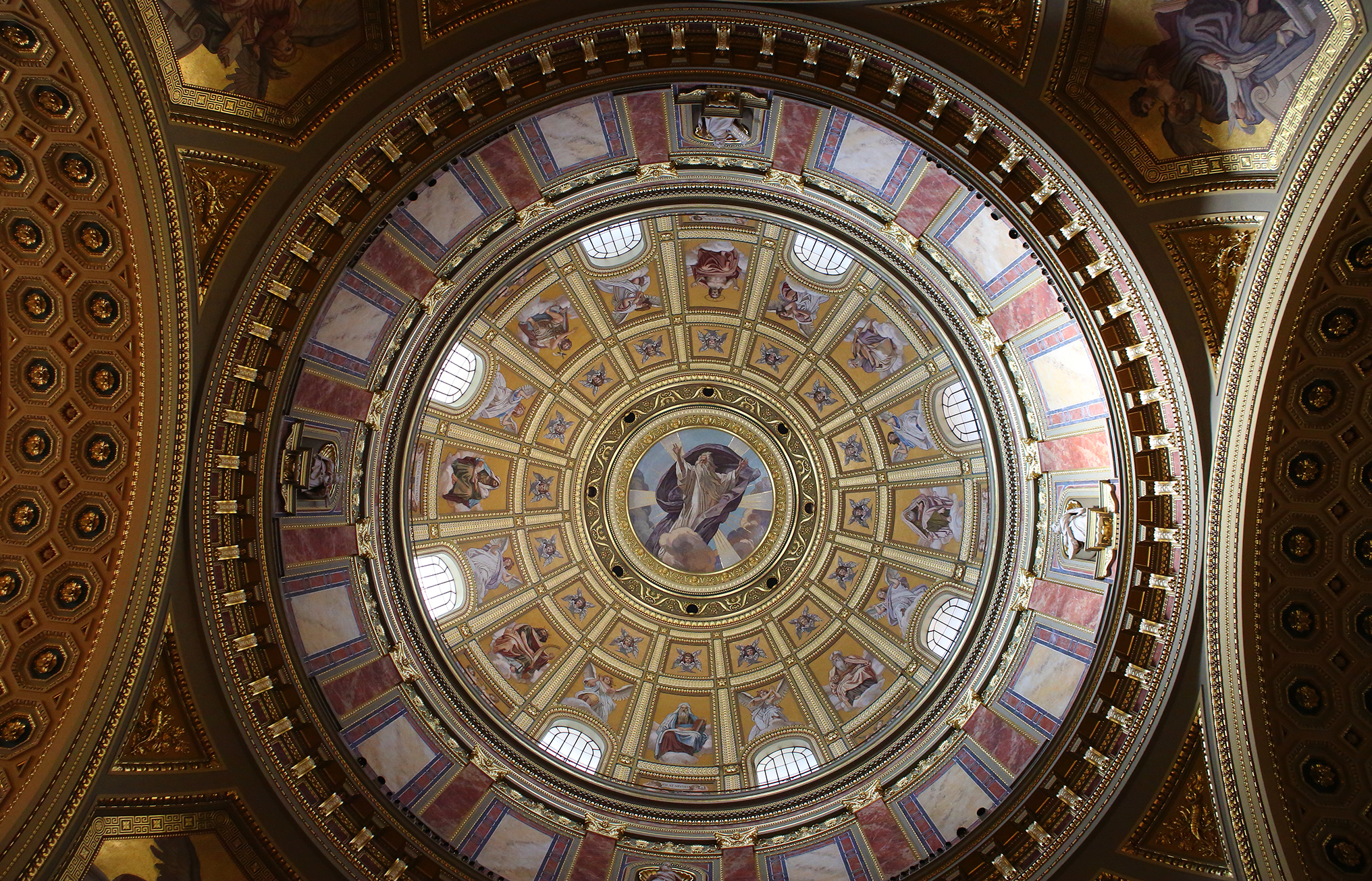
Interior of the dome of St. Stephen's Basilica
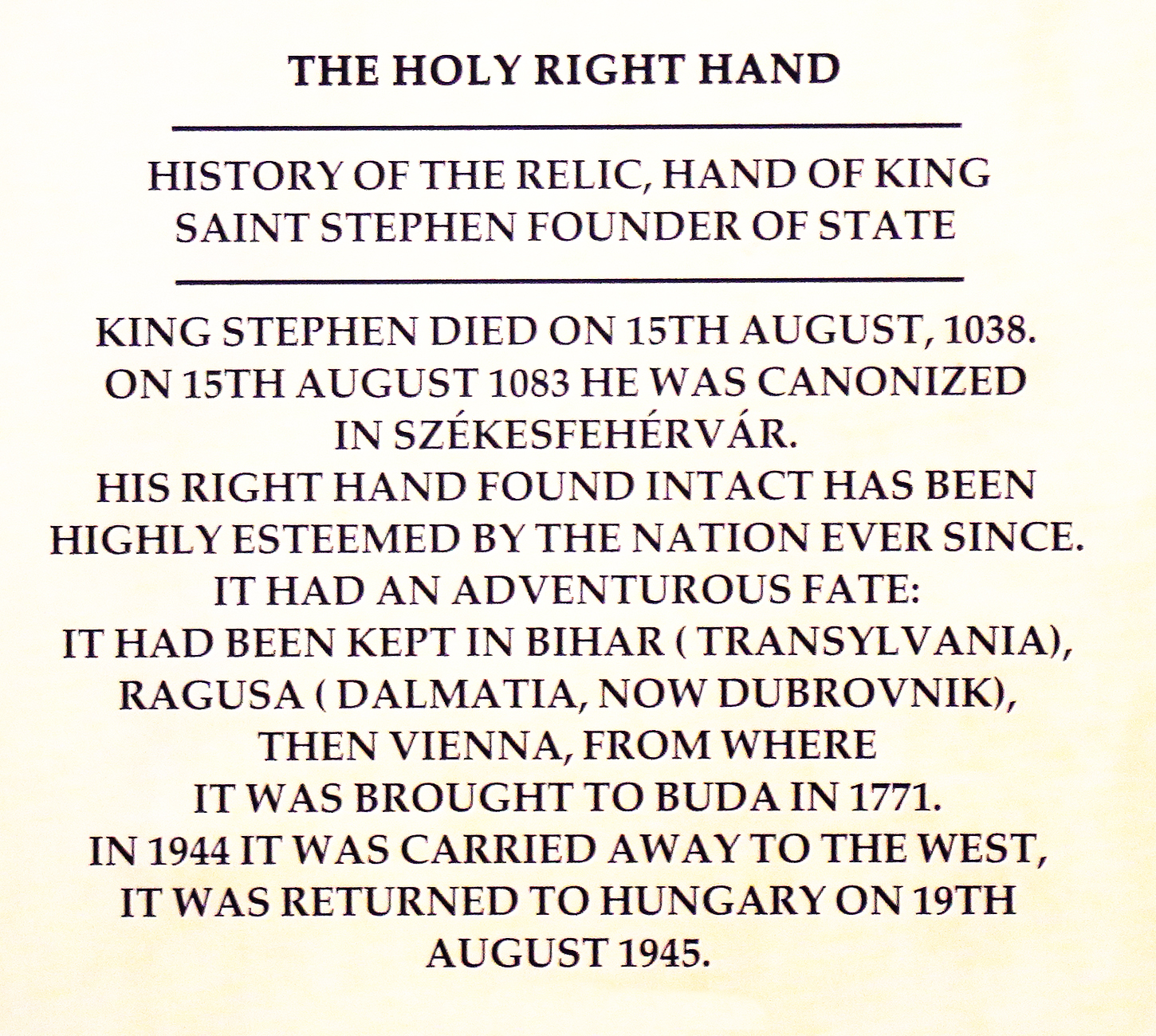
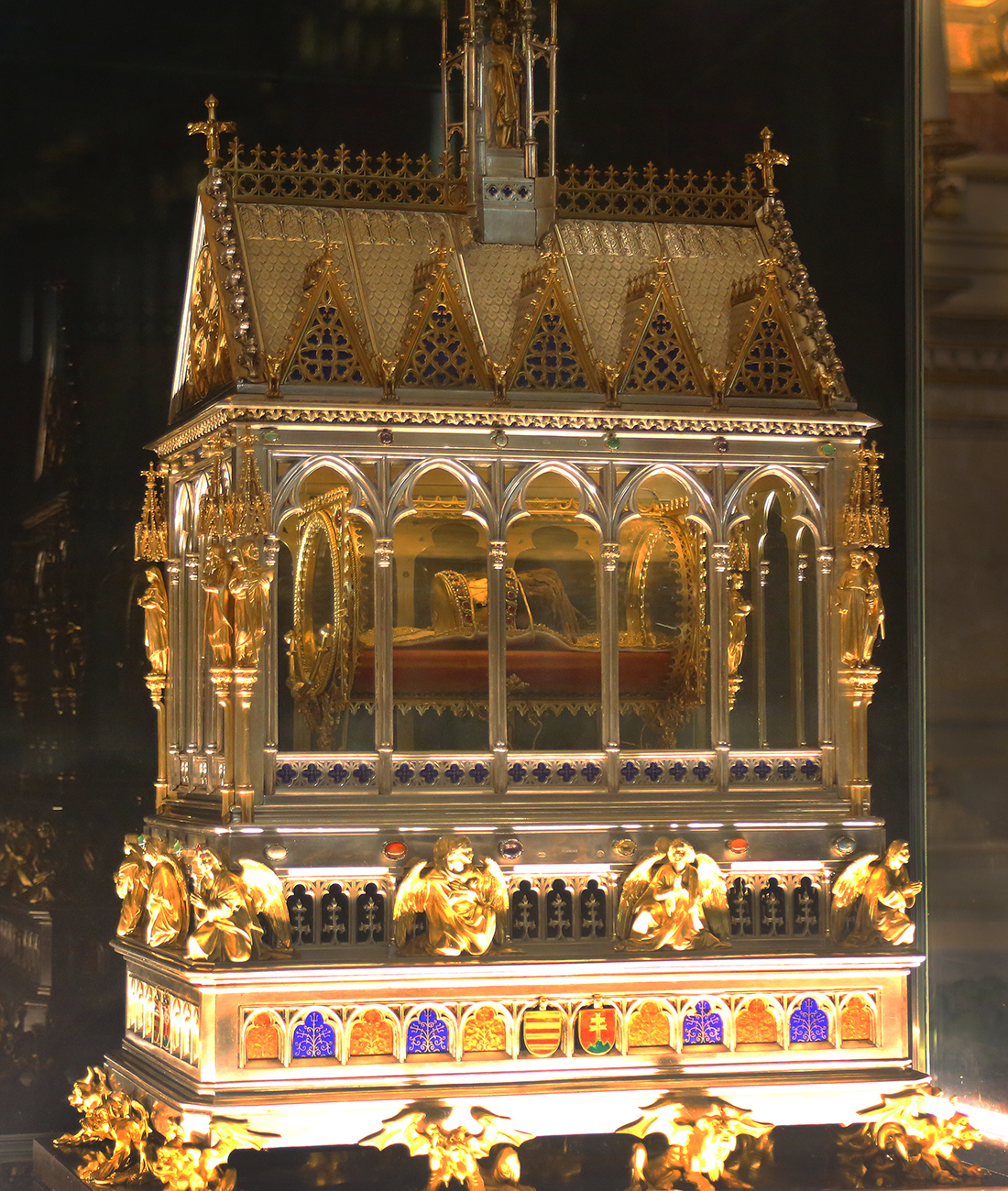
St Stephen's right hand is said to be housed in this reliquary, kept in the Basilica.
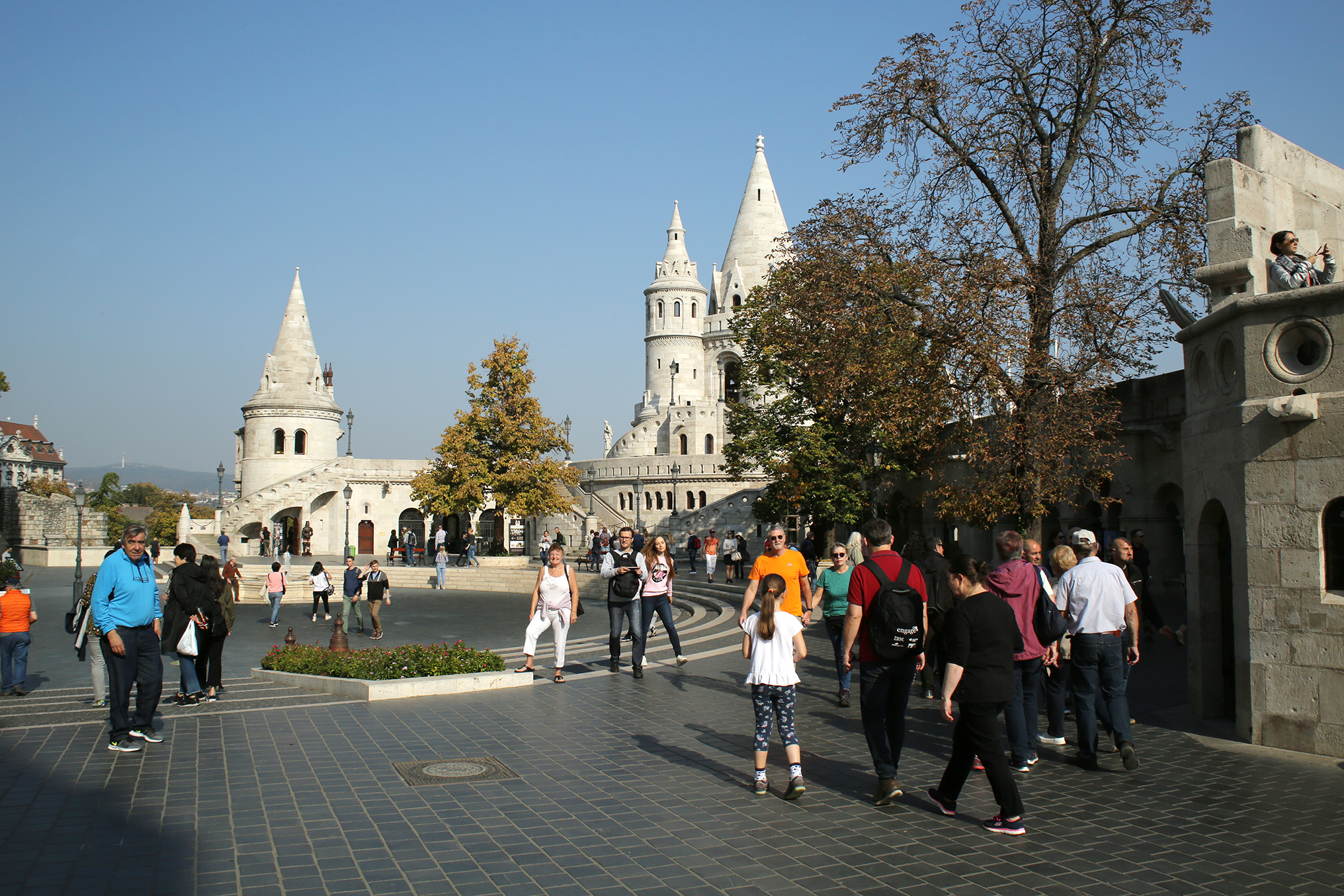
Fisherman's Bastion: We had lunch in an airy patio restaurant just beyond the right skyline of this picture.

Lunch at Fisherman's Bastion, overlooking Budapest and especially the Hungarian Parliament building.
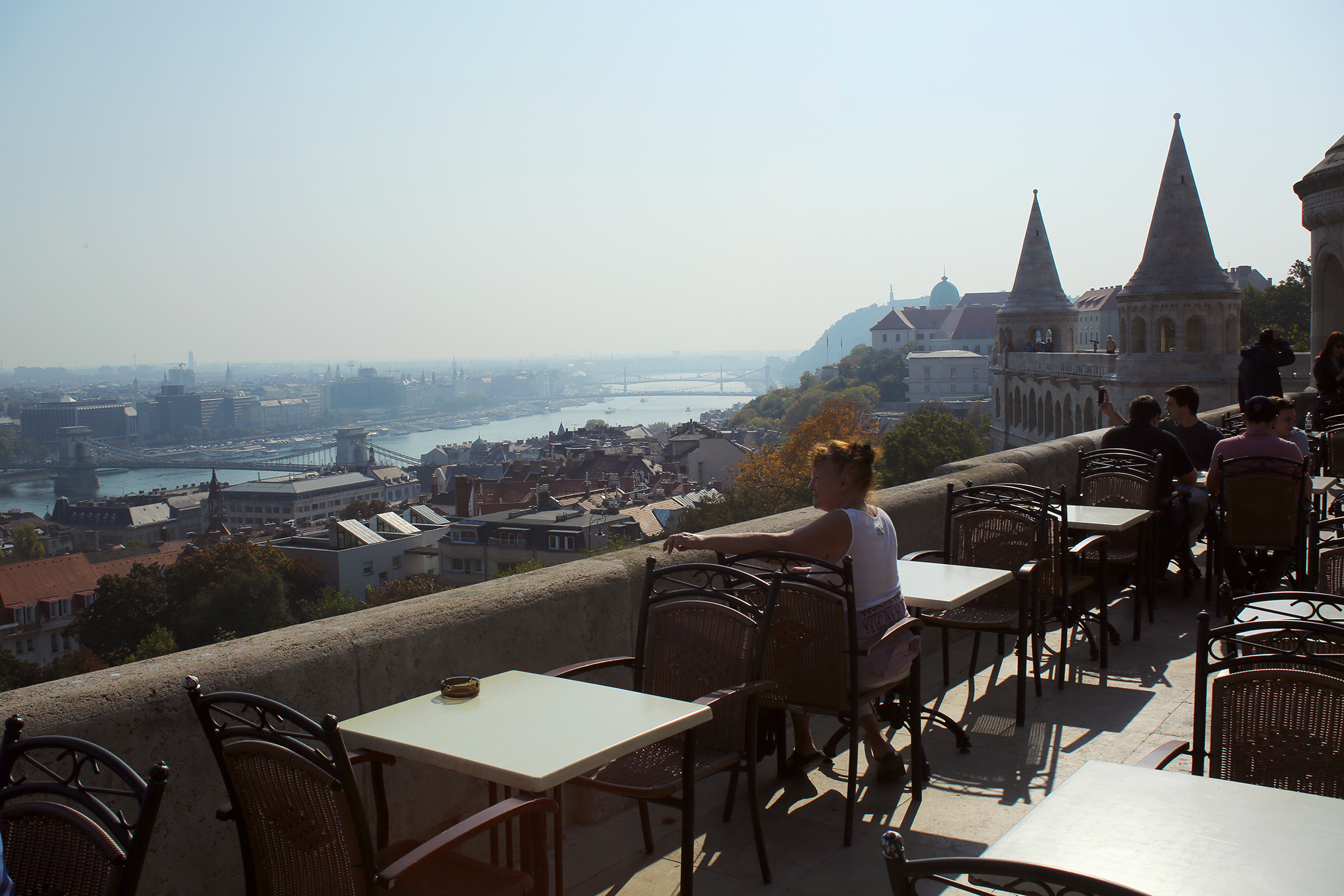
Mary enjoying the view from Fisherman's Bastion.
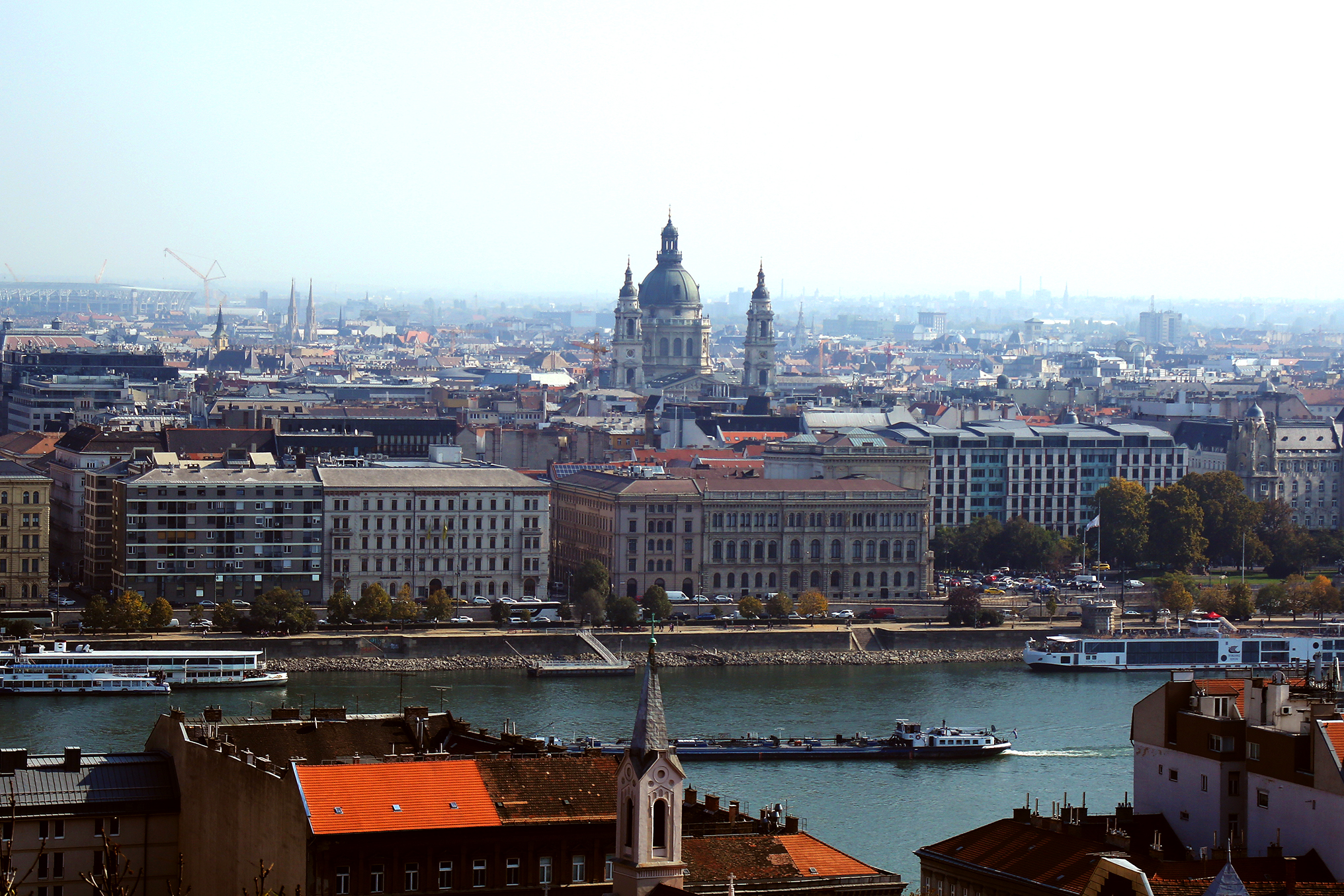
St. Stephen's Basilica from Fisherman's Bastion.


Roughly 200-degree panorama (unannotated and annotated version) of the view from the Fisherman's Bastion restaurant where we had lunch. Scroll right to see the complete panorama.
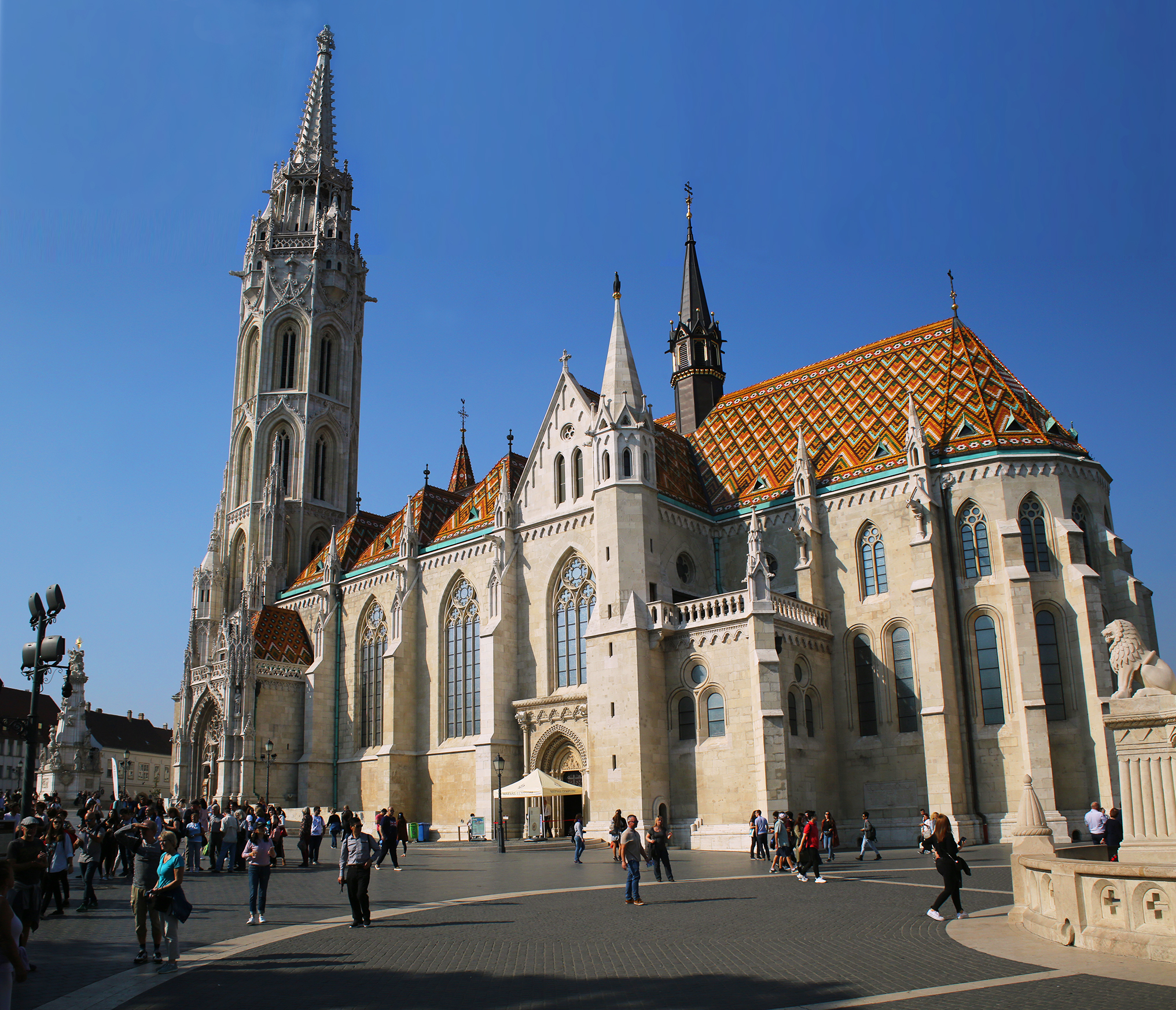
Matthias Church at Fisherman's Bastion.
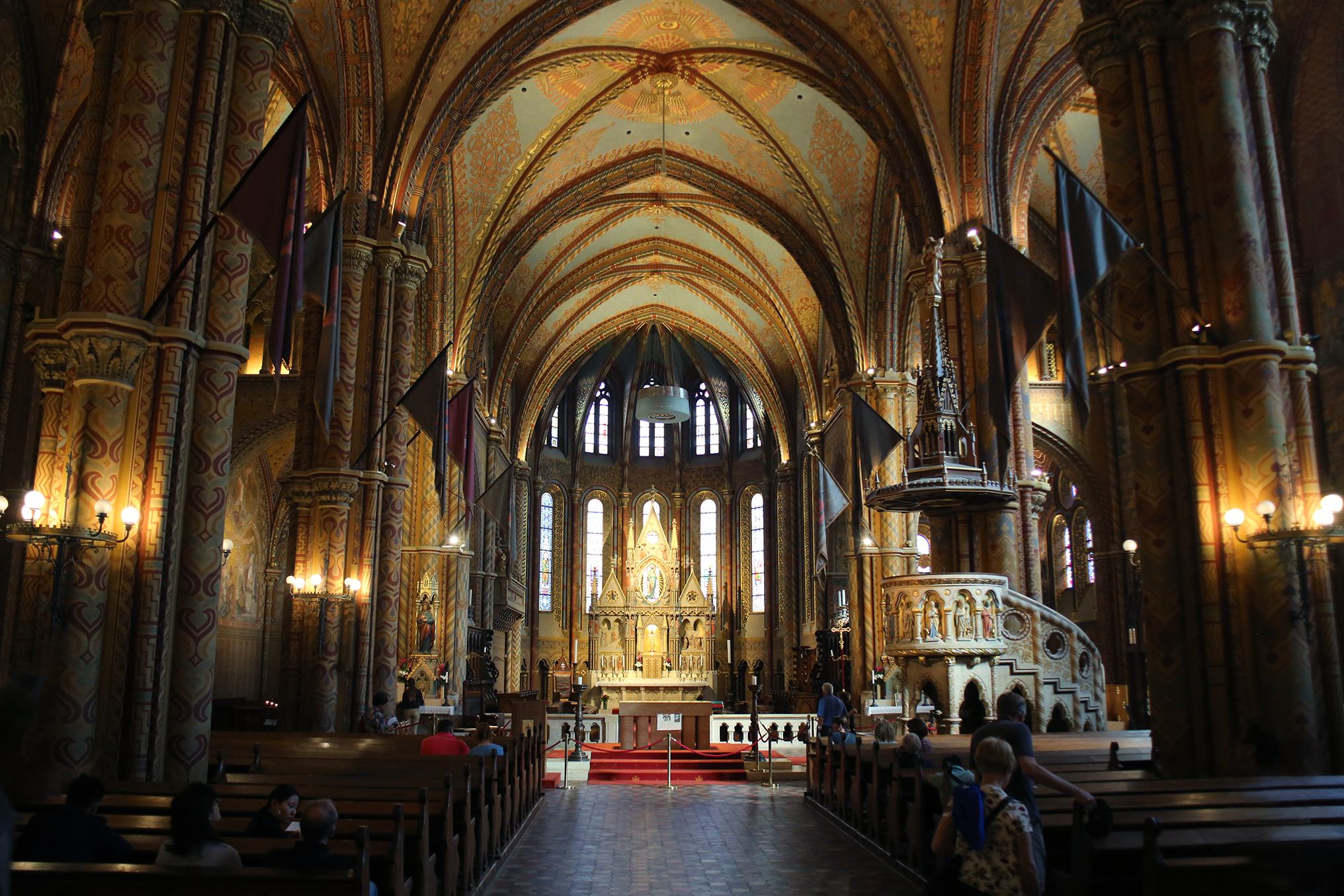

Mathias Church altar
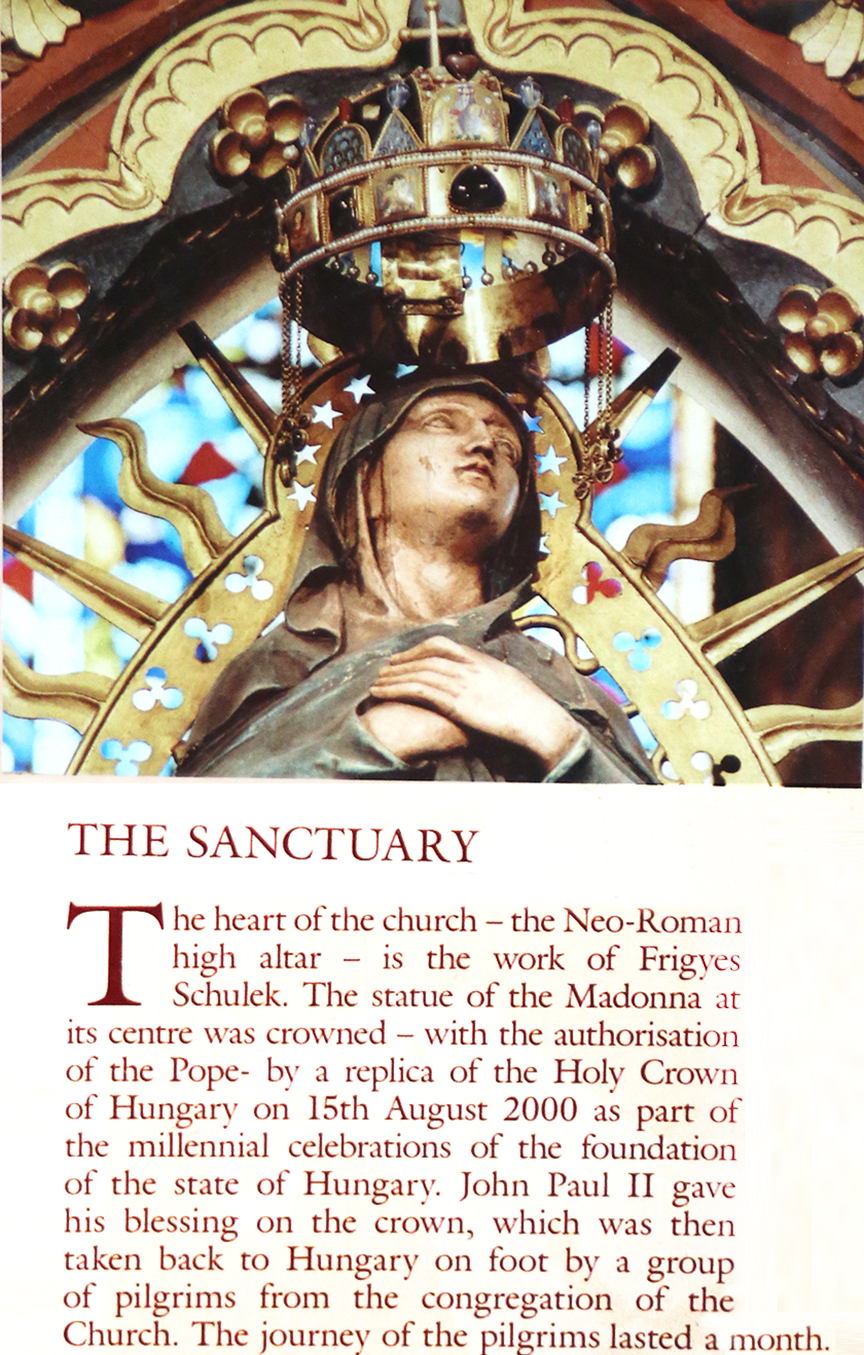

Statue of St. Stephen outside the Matthias Church at Fisherman's Bastion.

Great Market Hall, at the end of the pedestrian shopping street Vaci Utca and on the Pest side of Liberty Bridge. The idea of building such a large market hall was the idea of the first mayor of Budapest, Karoly Kamermayer, and the building was built around 1897. The market fills three floors and includes souvenirs and clothing as well as produce. And restaurants!
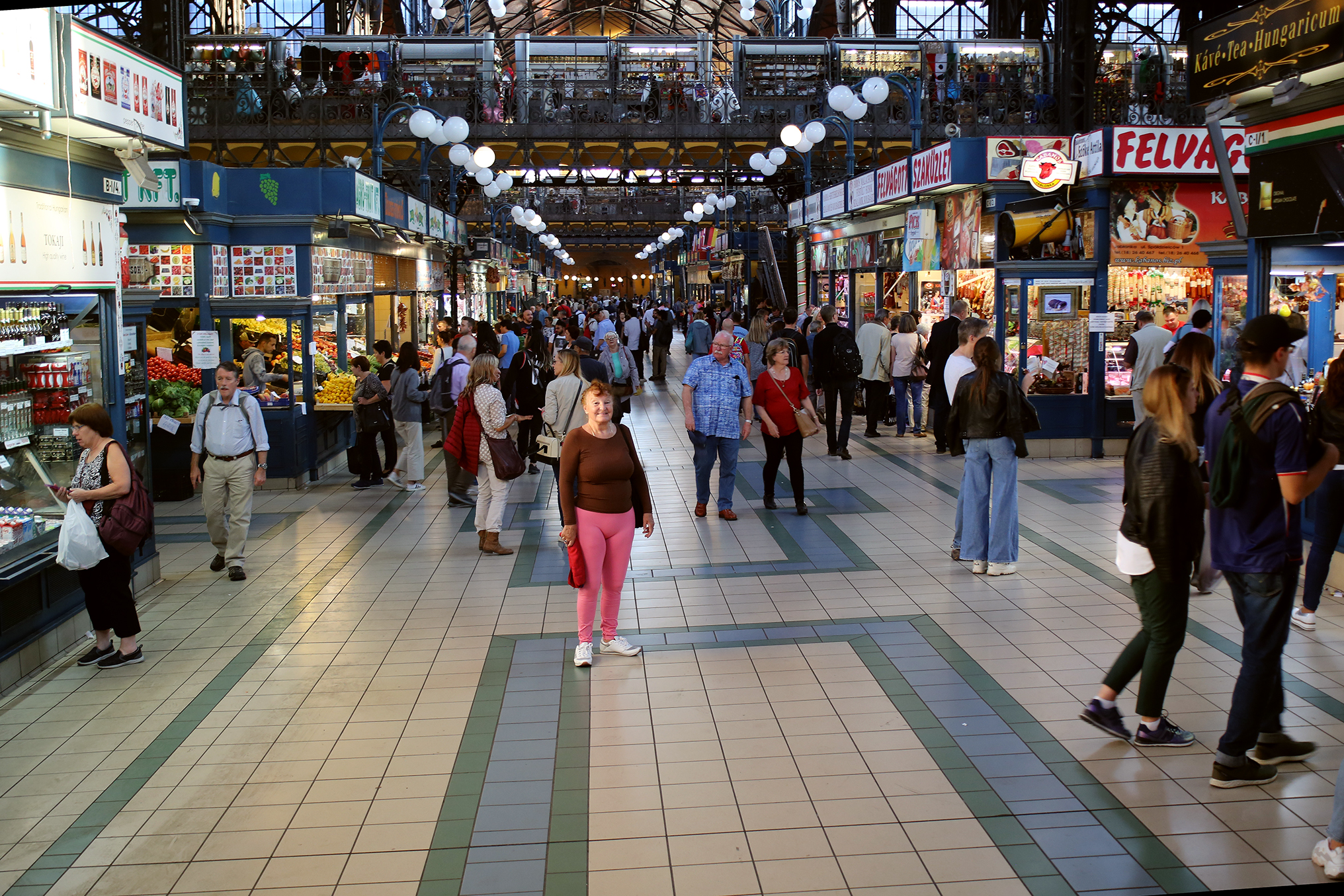
Ground floor of the Great Market Hall

Pepper heaven -- one of several! -- in the Great Market Hall

The market was sausage heaven, too, featuring pork sausage like that made by John's father.
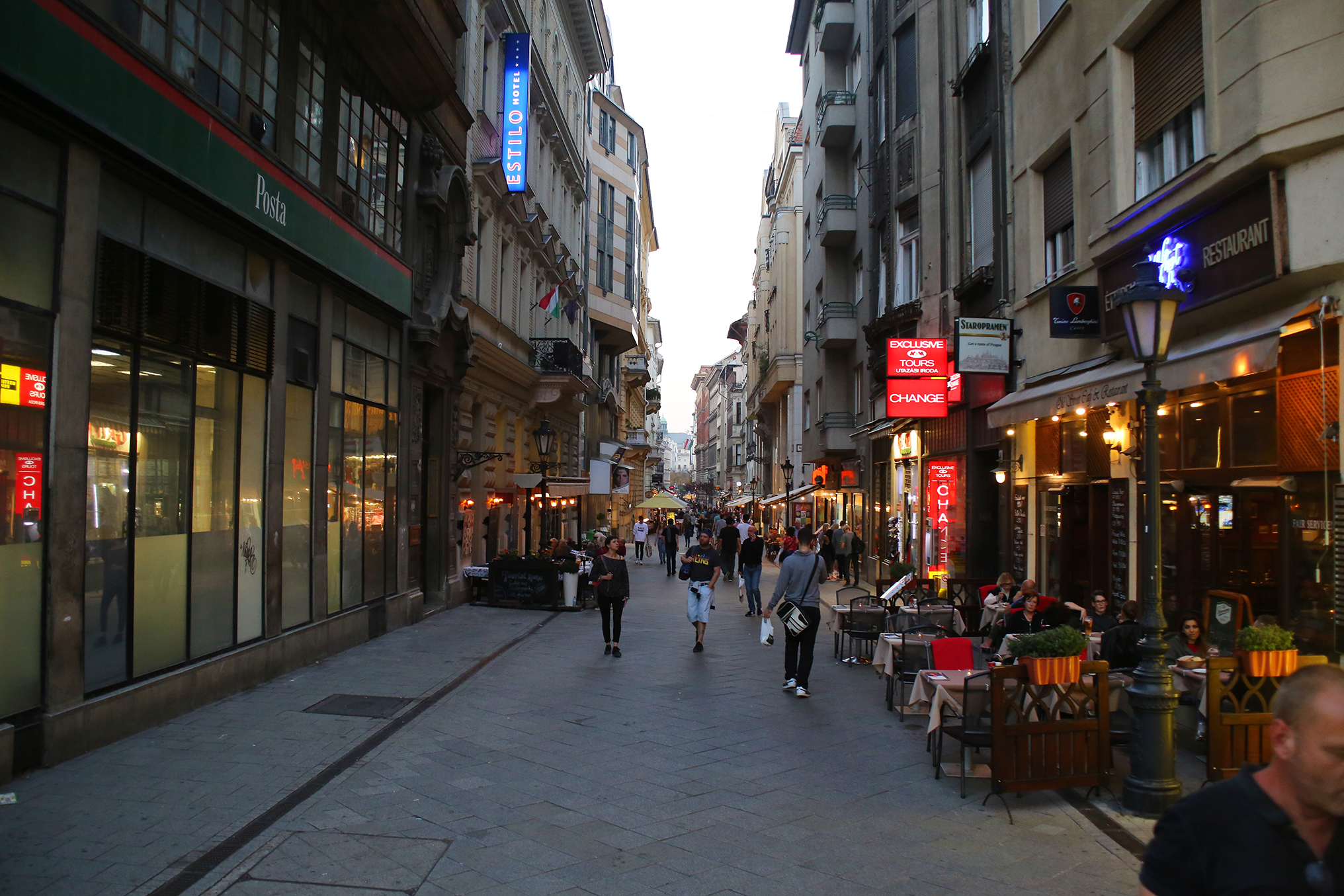
South end of Vaci Utca, during our last evening in Budapest.
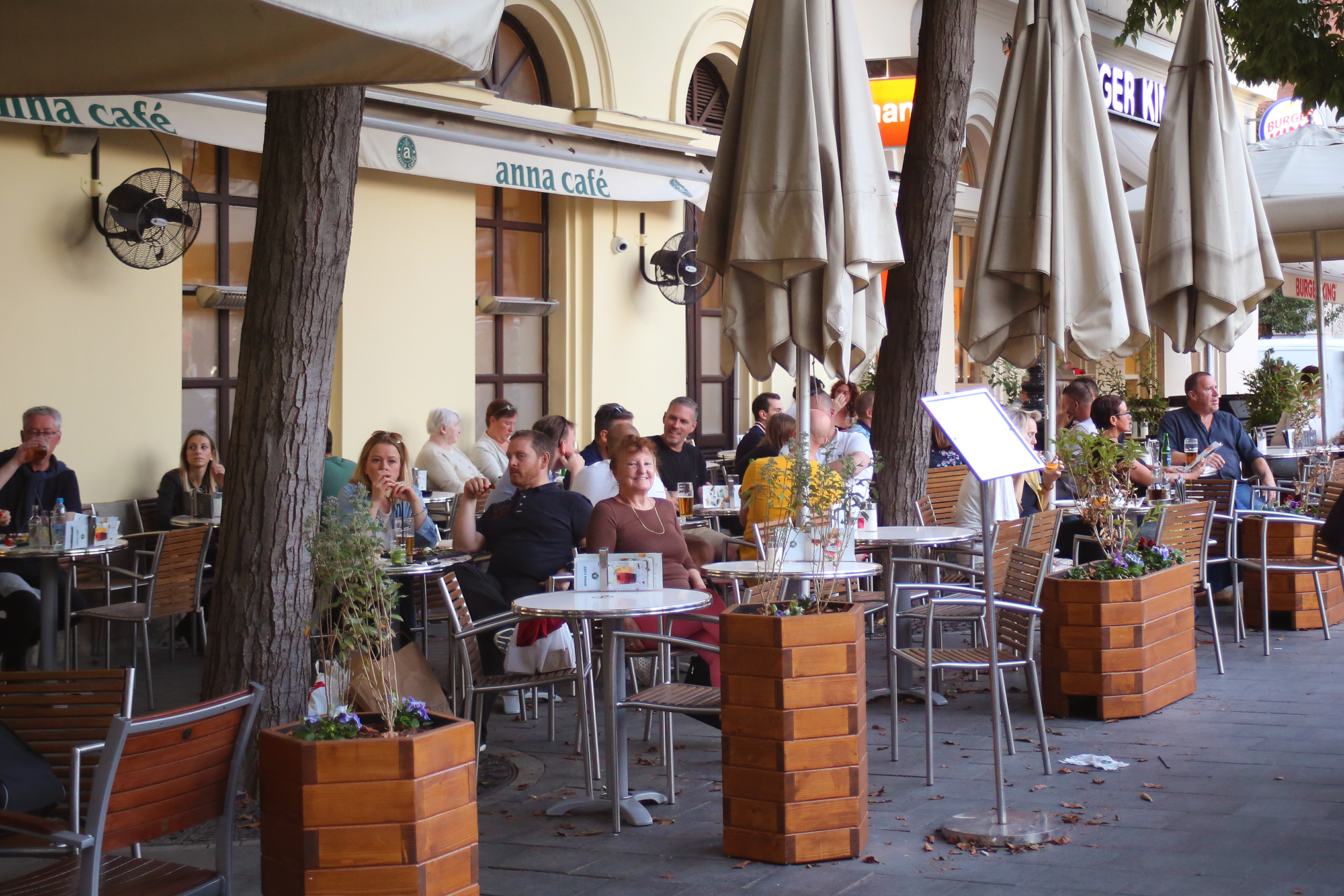
Dessert during our last evening in Budapest.
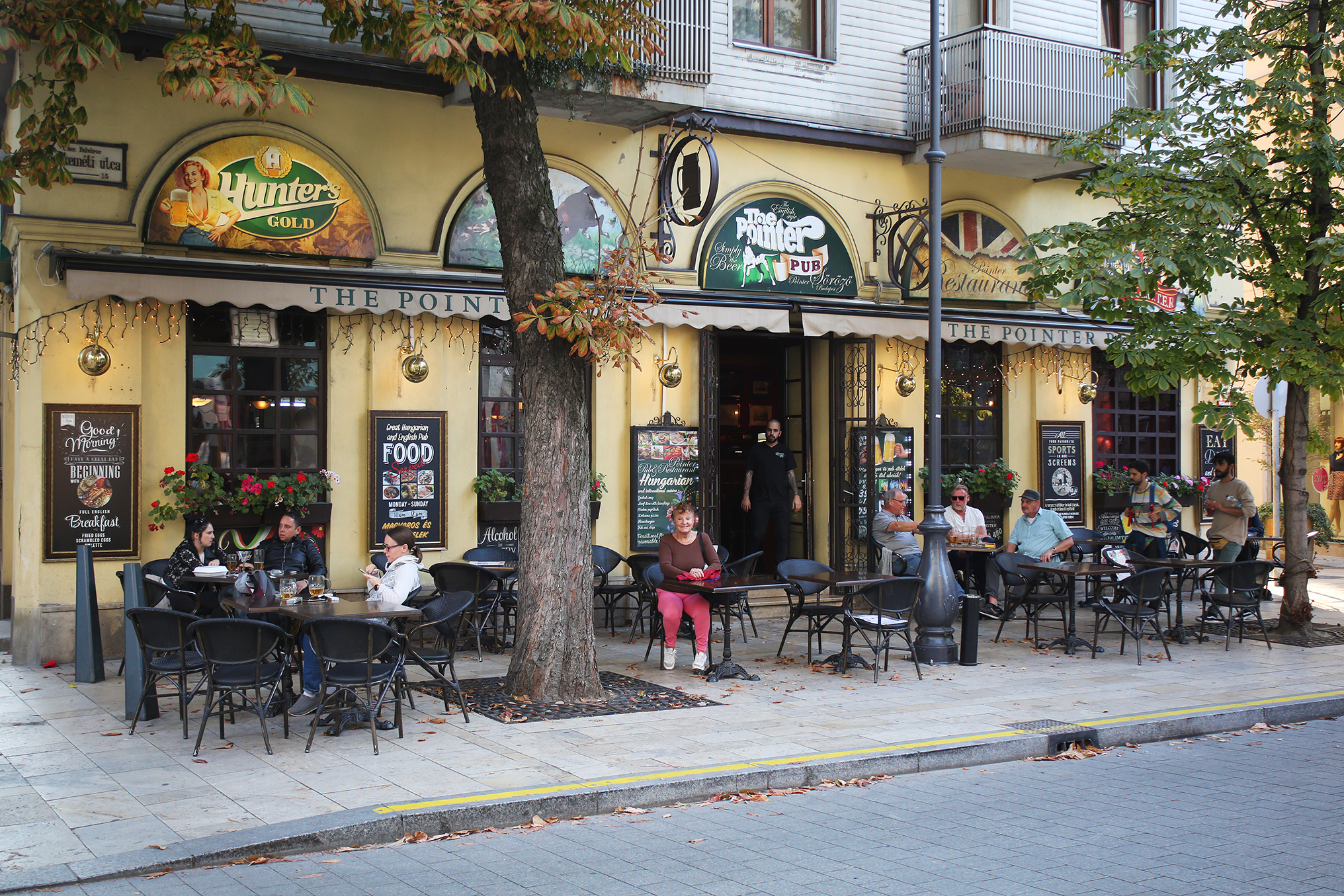
Mary very much enjoyed the pub across the street from our hotel.
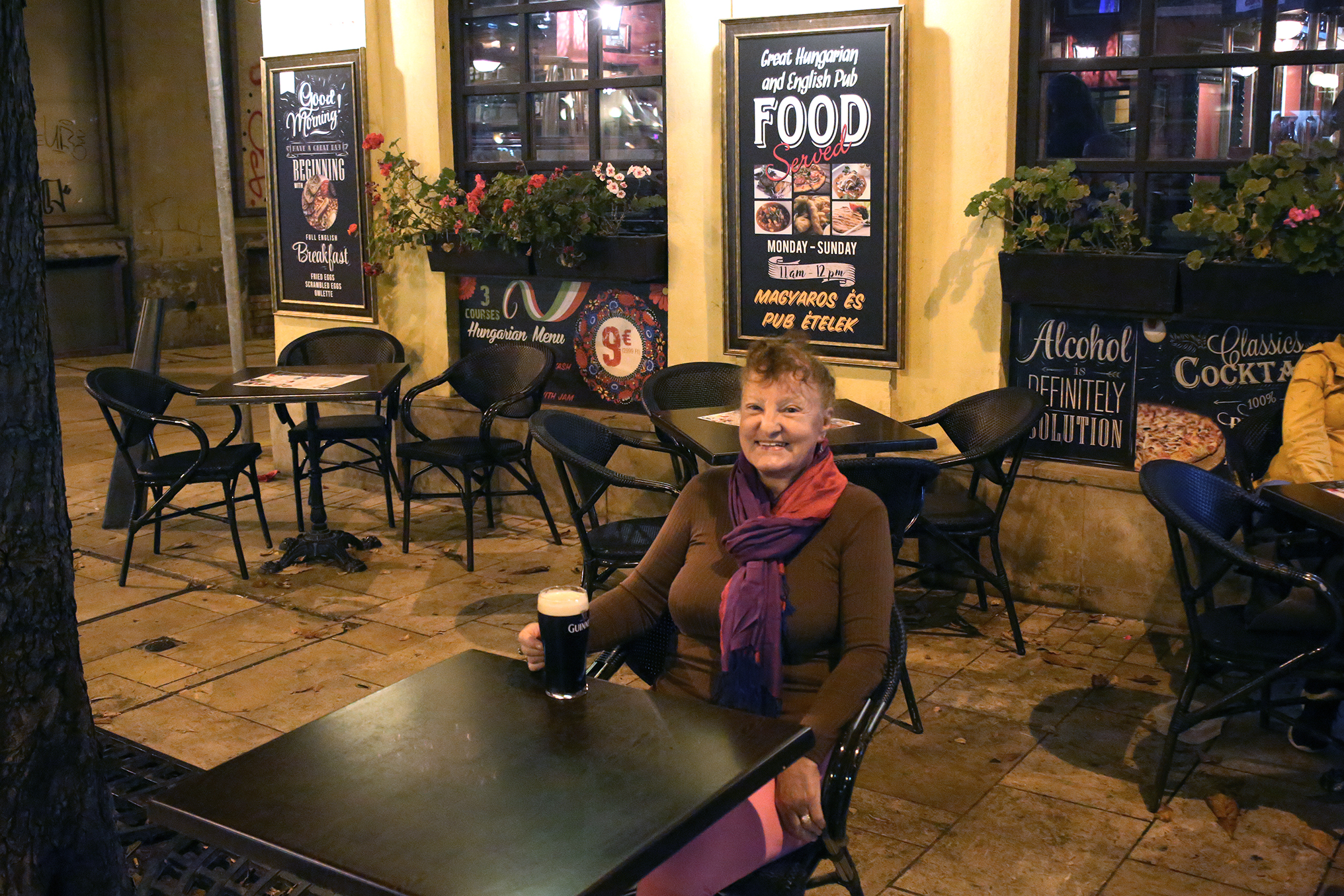
Mary, enjoying the ambience at the pub across the street from our hotel, on our last night in Budapest.

Memories of Hungary
Brief visit to Val and Kormend
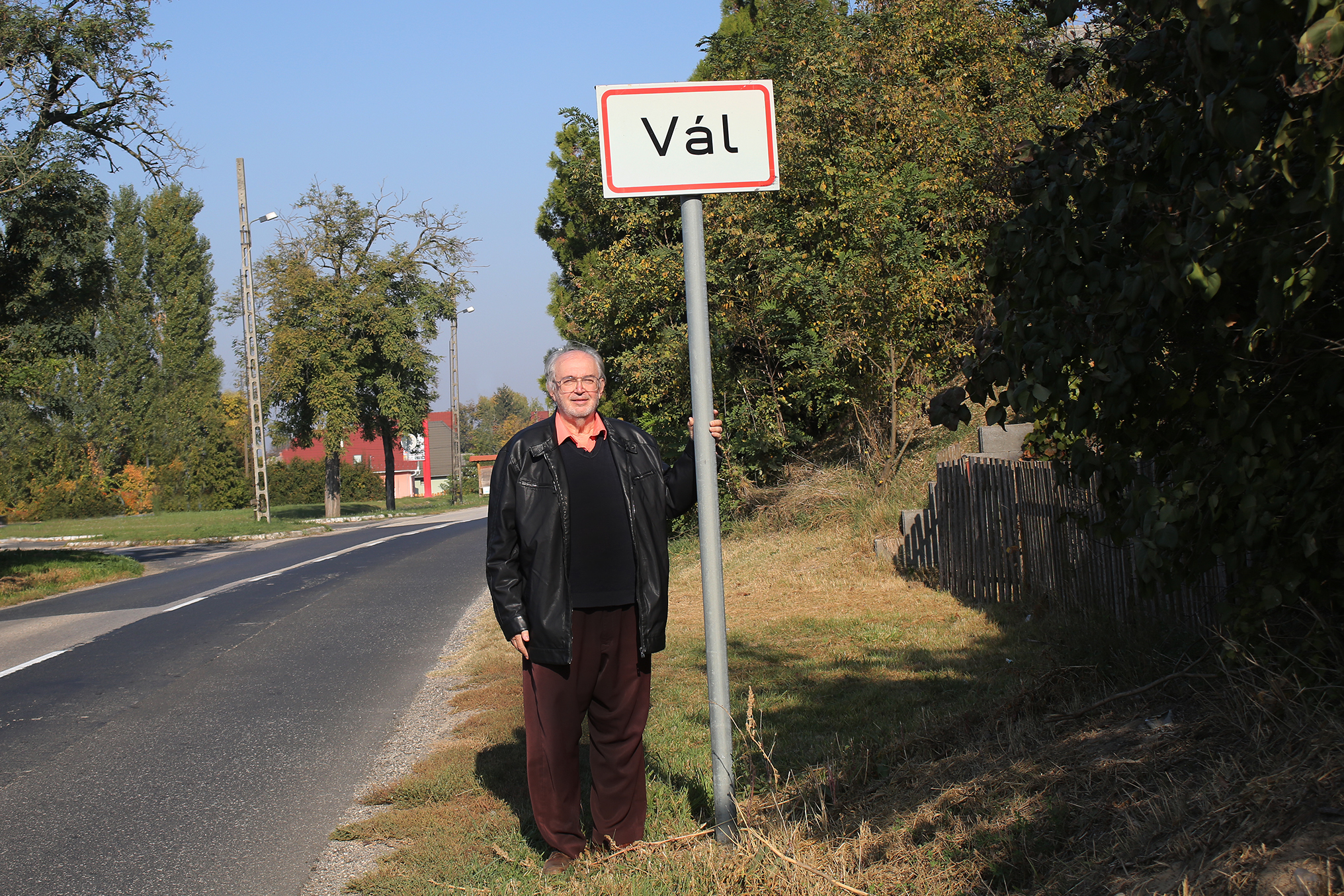
On the way home, we stopped briefly in John's father's home town, Val, a sleepy country village, a few miles beyond the SW outskirts of Budapest. In truth, Val is close enough to Budapest so that enterprising young people have largely left for more profitable pastures.
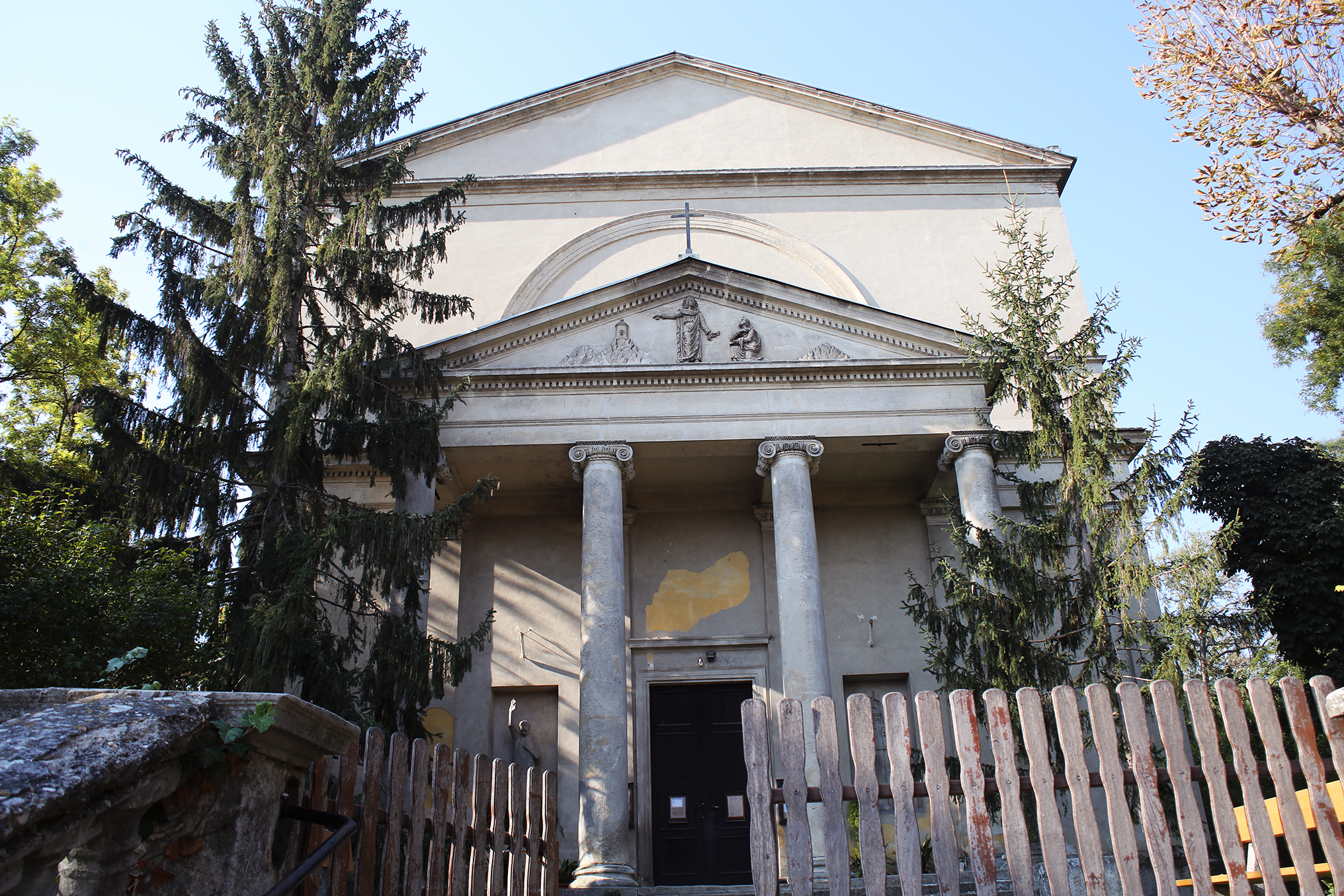
John has lost contact with his remaining family (a few cousins, as far as he knows), in part because he does not speak or write Hungarian. But this is the town Catholic church, which John's father attended while growing up.
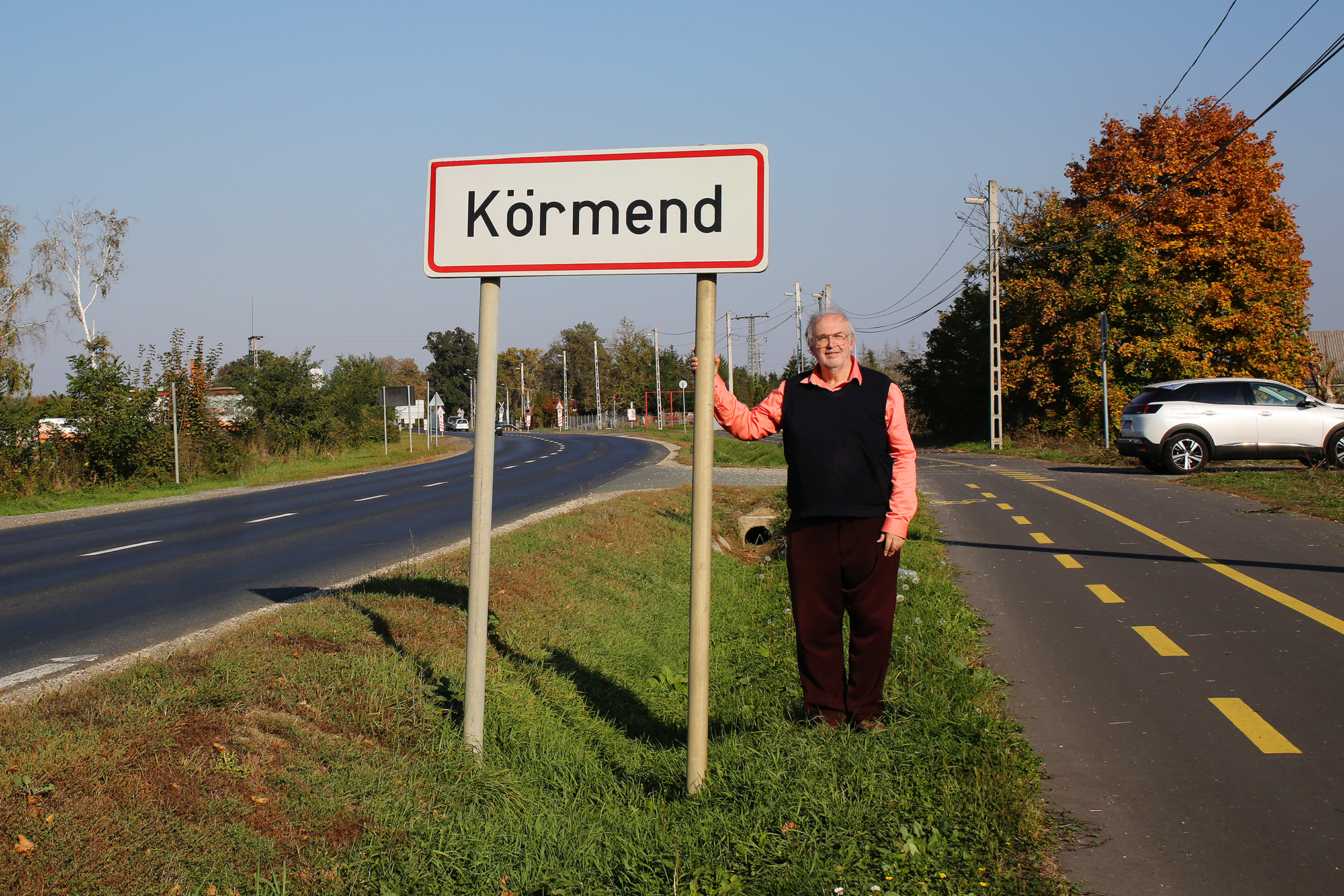
We also made a brief visit to Kormend, in western Hungary, very near the Austrian border. That's our Peugeot in the right-side background.
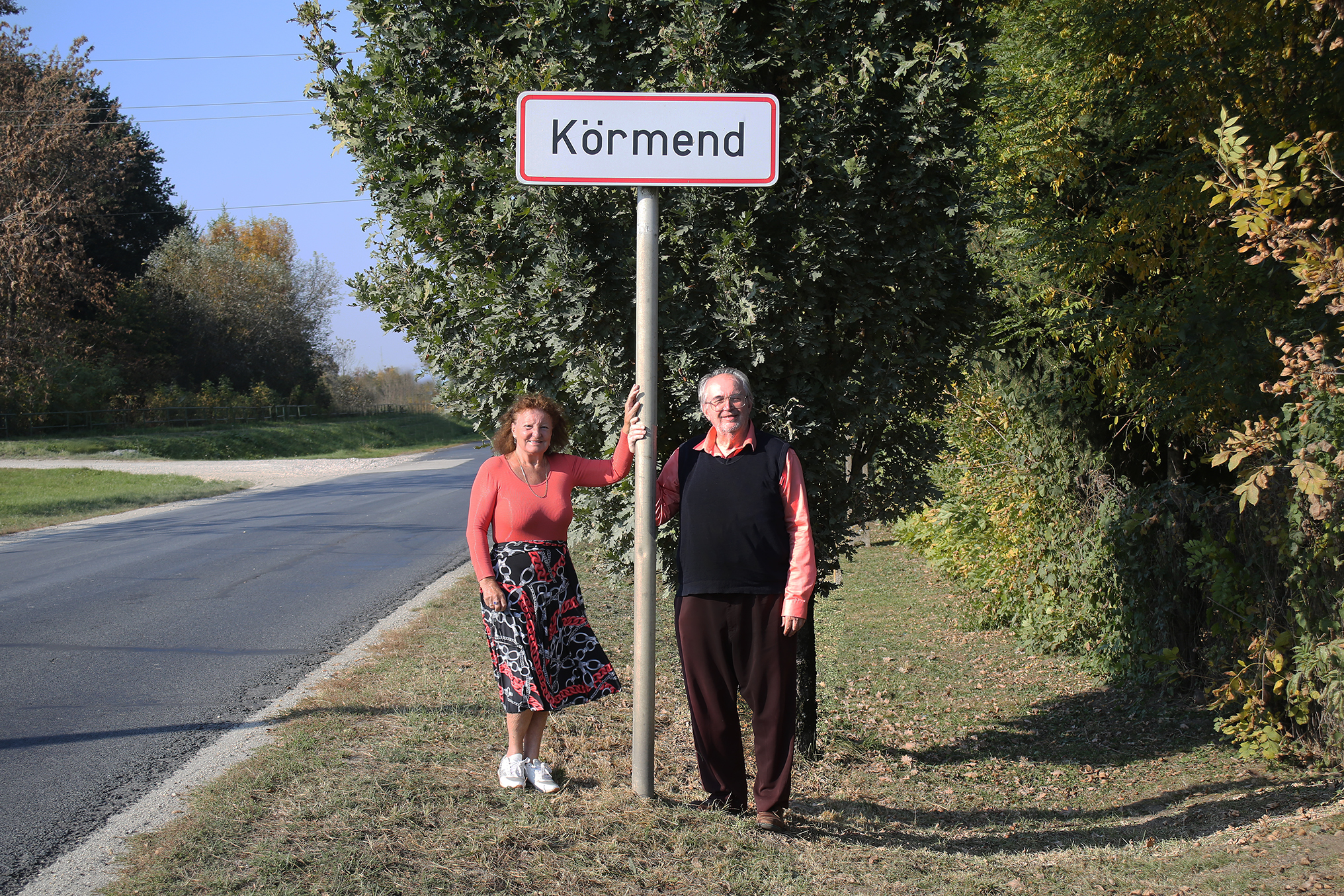
Town sign of Kormend, approaching from the south.
University of Texas Astronomy Home Page
This web site was finished and posted on October 17, 2018. Total visits since October 17, 2018 =
John Kormendy (kormendy@astro.as.utexas.edu)